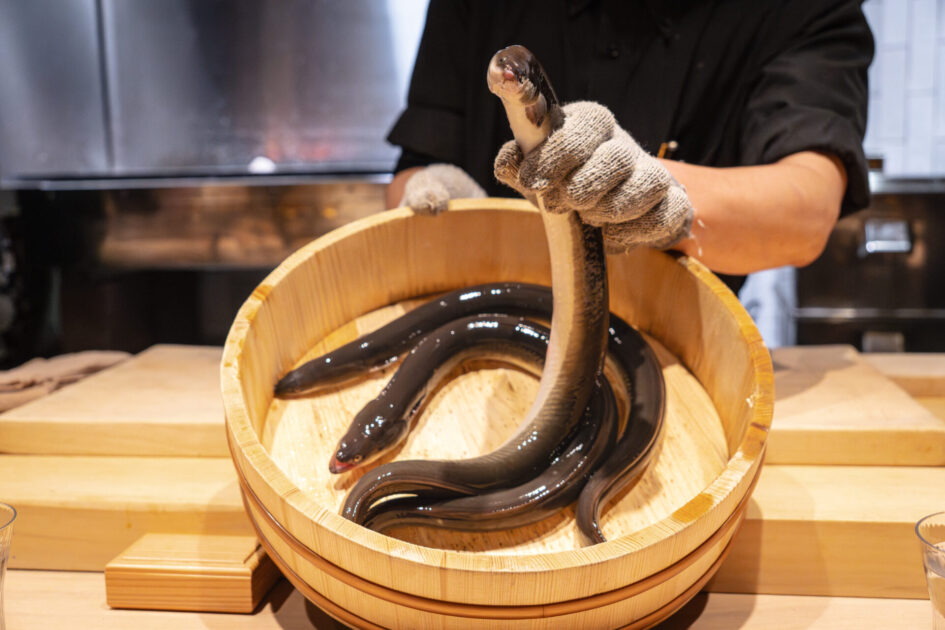CONTENTS
About “Sumi to Ogawa”
Concept
Tucked away on the third floor of a multi-tenant building in Nakasu-Kawabata, Fukuoka, Sumi to Ogawa is a discreetly marked Japanese restaurant offering a deeply immersive dining experience with only five counter seats. This intimate space showcases a refined kaiseki course imbued with the distinct aroma and artistry of charcoal grilling.
At the heart of the serene yet spirited counter lies a culinary narrative that merges the seasonal bounty of Kyushu with the elemental intensity of binchōtan charcoal. Each dish expresses a unique “face of fire”—whether it’s eel grilled until its core is infused with smoky heat, or ingredients subtly enhanced through aburi (searing) and steaming techniques.
Accompanying the meal is a thoughtfully crafted booklet that delves into the inspiration behind each course, as well as the symbolism of the plates and presentation—stirring the imagination of diners. The contrast between quiet, traditional dishes like chawanmushi or white miso soup and the playful, multi-layered surprises reminiscent of a matryoshka doll culminates in a theatrical experience that transcends the bounds of conventional kaiseki.
Every element of the course is conceived and executed by a single chef—whose mastery of heat, aroma, sound, and stillness forms a meticulously calibrated experience. The limited seating allows for an exquisite orchestration of sensory nuance.
About Chef Kojiro Ogawa
At the counter stands Kojiro Ogawa, the chef-owner of Sumi to Ogawa. His culinary journey began in Kyoto, where he trained for six years at the legendary Hyotei, immersing himself in the philosophy and fundamentals of Japanese cuisine. Recognized early for his talent, he was awarded the Bronze Egg in 2014’s RED U-35, a prestigious competition spotlighting rising chefs.
Born into a family of chefs—his brother also runs a hard-to-book restaurant in Kyoto—Ogawa honed a sensitivity to flavor that bridges the elegance of Kansai and the richness of Kyushu. His deep dedication to fire as a cooking medium lies at the core of his cuisine.
Despite operating solo, Ogawa’s movements are fluid and assured, blending precision with warmth. He effortlessly alternates between intense focus and engaging conversation, exuding a presence more akin to a performer than a mere chef. Through his craft, he conveys both passion and sincerity.
Restaurant Reputation
Soon after opening, Sumi to Ogawa gained a reputation as a “reservation-impossible” destination, now drawing discerning gourmets from across Japan. Its appeal lies not just in taste, but in the seamless integration of culinary structure, fire technique, artistic presentation, and heartfelt hospitality.
Especially praised is Ogawa’s mastery of binchōtan grilling—elevating ingredients like eel and stonefish with a perfect balance of crisp char and moist tenderness. Watching him at work is itself part of the pleasure, a privilege reserved for the five counter seats.
Though the menu changes monthly, each dish showcases a new expression of fire, offering returning guests fresh discoveries each visit. The exceptional value for the quality served often elicits surprise: “Unbelievable for the price.”
Ingredients are sourced from seasonal produce across Kyushu, with dishes reflecting the region’s climate and culture. From plating to written narratives, every detail is imbued with intent, often leaving guests remarking, “Each dish tells a story.”
The chef’s live cooking across the counter, his gentle manner, and dynamic performance all leave a lasting impression. The contrast between his fiery charcoal work and soft-spoken hospitality has led many to call him “a chef and a performer.”
Even the course finale features a touch of humor, with guests frequently noting: “I never get tired of coming here every month,” and “I can’t wait to see what’s next.” The loyal fan base continues to grow steadily.
Prelude
Arrival and Entrance
Just a few minutes’ walk from Nakasu-Kawabata Station, the third-floor location in an unassuming building belies the otherworldly experience behind the door.
Upon exiting the elevator, you’re greeted by a white noren curtain modestly bearing the ink-brushed name Sumi to Ogawa. This minimalist entrance evokes the Japanese aesthetic of space and restraint. To the side, a shimenawa rope and sacred shide paper streamers convey purity and reverence. A single large ceramic jar reflects soft light from inside the restaurant, casting a serene shadow.
Though unpretentious, the entrance exudes a quiet dignity—an atmosphere that gently settles the mind. The space feels akin to the roji garden path leading to a chashitsu (tea room), preparing guests for the refined journey ahead.
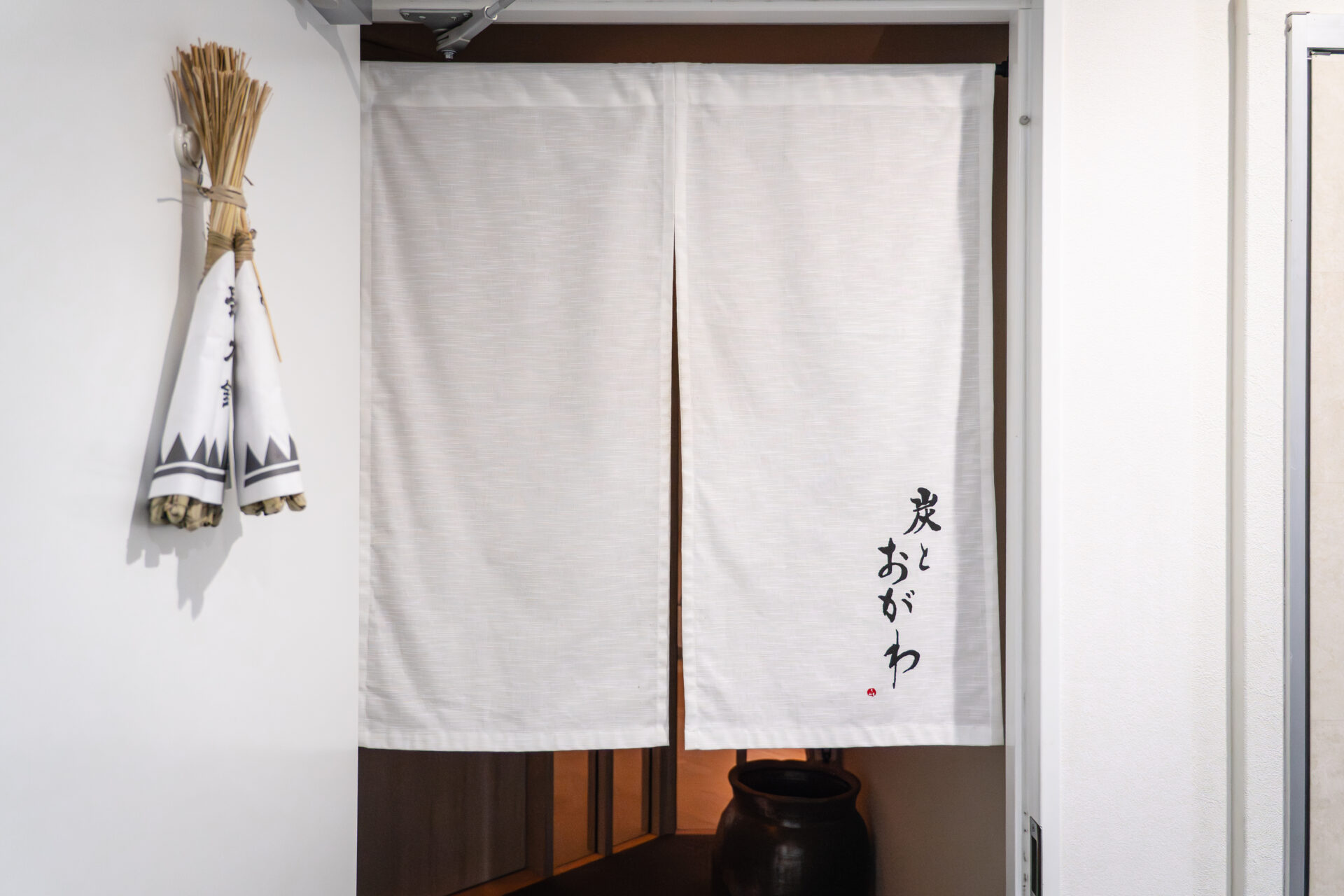
Dining Space
Step through the noren and you enter a five-seat L-shaped counter crafted from pristine, solid wood. Designed so every seat has a full view of the chef’s movements, the layout creates a sense of front-row intimacy, like an audience surrounding a stage.
The ceiling’s gentle wooden curve and warm, indirect lighting lend the room a soft ambiance. White tiled walls offer a sense of cleanliness, while the depth of the space feels increasingly hushed and contemplative.
Behind the counter, the open kitchen centers around a charcoal grill. Neatly arranged knives and meticulously cared-for tools hint at the chef’s discipline and aesthetic sensibility. The matte black ventilation hood and hanging iron kettles introduce a bold Japanese accent.
Each seat is meticulously prepared—with its own tray (oshiki), chopstick rest, and a neatly folded white napkin—underscoring the hospitality embedded in every detail. Here, the fragrance of charcoal and the focused stillness invite you to leave the world outside behind.
Menu Presentation
Like a curtain rising on a stage, the evening begins quietly and deliberately.
At the center lies the glowing charcoal grill, the visual anchor of the counter. In this five-seat space, “watching” the cuisine is part of the experience. The sound of the fire, the scent of grilled ingredients, the curl of rising steam—every element becomes a performance, activating all five senses.
The course opens with seasonal delights such as a “Spring Hassun” or chilled starters adorned with cherry blossoms. During spring, ingredients like fuki no tō (butterbur buds), takenoko (bamboo shoots), and shirauo (whitebait) burst with fresh life, bringing both visual delight and an uplifting sense of the season.
A menu booklet accompanies the meal, detailing not only the dish names but also origins, cooking techniques, and meanings behind the chosen vessels. Like a playbill, it invites diners to unravel the story behind each course. This thoughtful curation naturally draws guests into the narrative arc of the meal.
Even before the first bite, anticipation is high and the senses are tuned. Sumi to Ogawa offers more than a meal—it’s an immersive experience that feels like witnessing a live stage performance.
Dishes Tasted
Hairy Crab with Shirako Vinegar and Tosa Vinegar Jelly
The opening dish of the course is a chilled appetizer featuring kegani (hairy crab) paired with cucumber and shirako-su(cod milt vinegar), topped with a refreshing Tosa-su jelly.
Each glistening strand of crab meat is gently coated with a silky vinegar sauce made from strained shirako, while the jelly adds brightness and depth. Upon tasting, a soft, mellow acidity spreads on the palate, evoking the early freshness of spring.
Adorning the top is hana-hojiso (shiso blossoms), adding subtle fragrance and color—a gentle breath of spring captured on the plate. Served in a delicate cut-glass bowl, the presentation is both elegant and emotionally captivating.
A starter that strikes a perfect balance of finesse and excitement—it’s easy to imagine guests thinking:
“From this very first bite, I already don’t want to leave.”
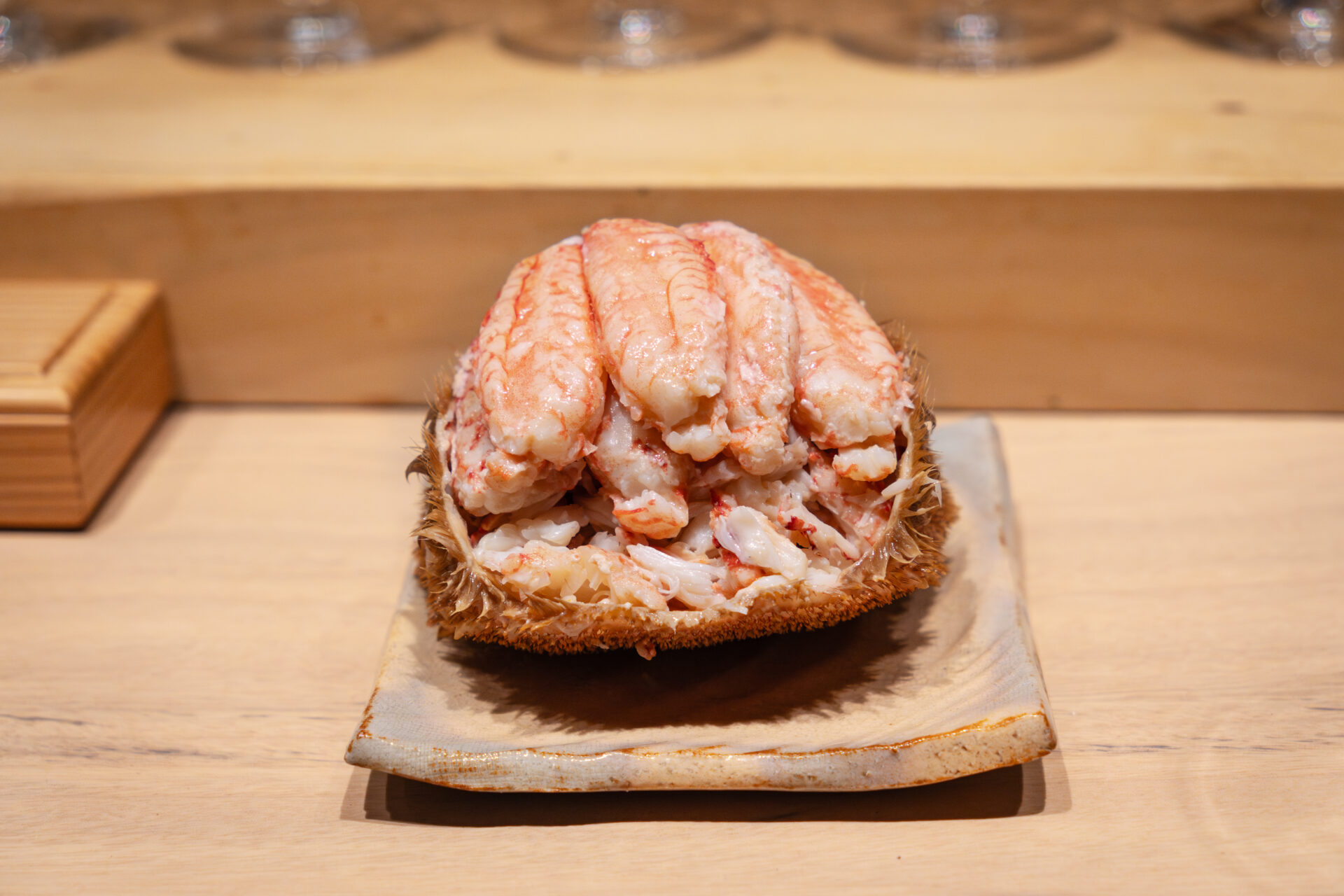
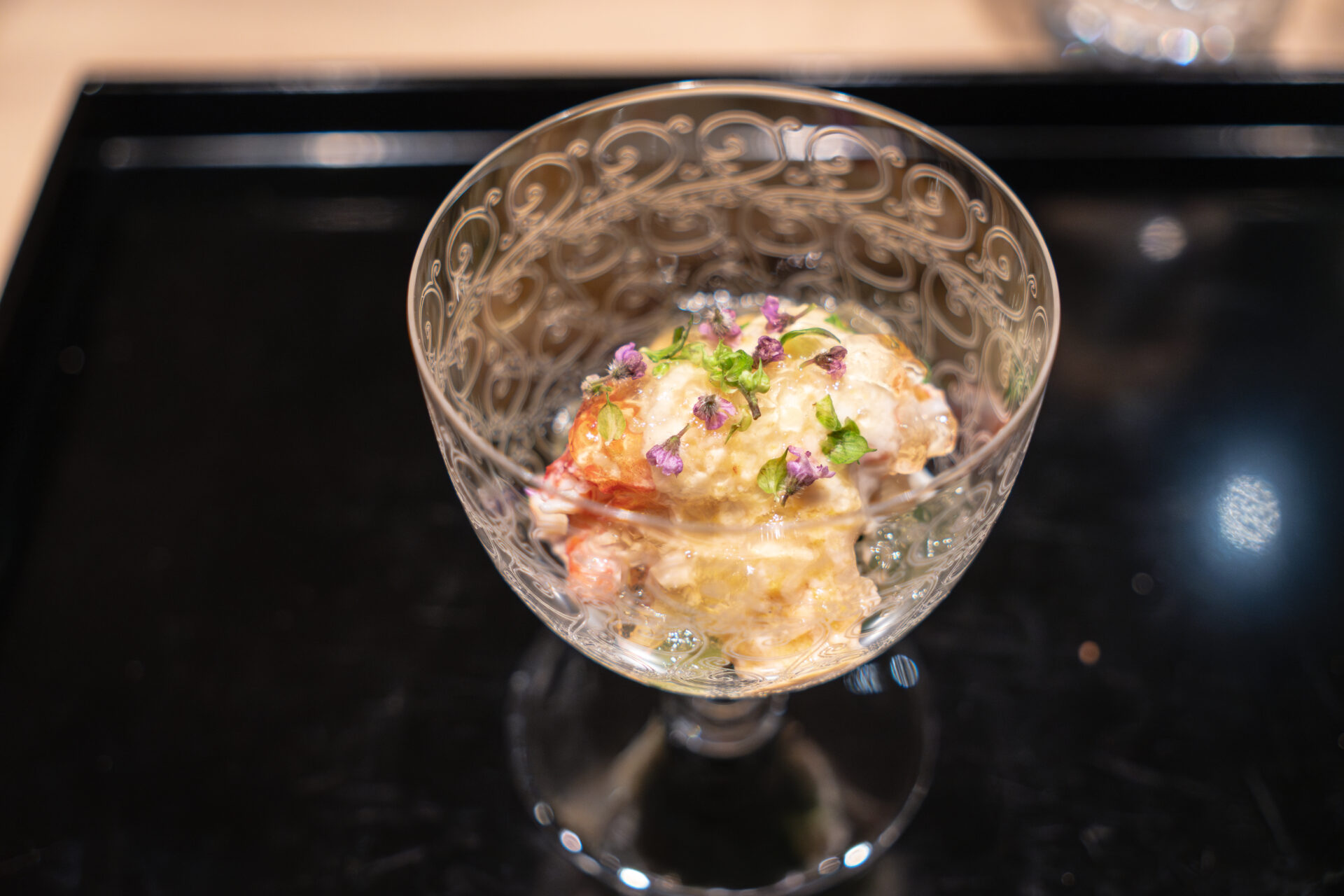
Charcoal-Seared Striped Beakfish | Wrapped with Wild Garlic and Tomato
Next comes a dish that embodies the very soul of Sumi to Ogawa—a live charcoal performance.
A glowing-red charcoal rod is brought before the counter, and freshly prepared ishidai (striped beakfish) is dramatically seared in an instant, sending fragrant smoke and the satisfying pop of burning embers into the air. It’s a sensory experience before the food even hits the plate.
The seared fish is sliced paper-thin and arranged lustrously on the plate, then layered with thin strands of wild garlic (gyoja ninniku) and fresh tomato. Served with a ponzu sauce accented by wasabi, the dish delivers layers of umami and aroma.
With each bite, the richness of the fish, the punch of wild garlic, and the acidity of tomato weave together to create a complete, balanced expression on the palate.
Beyond taste, the ability to witness the transformation up-close is what makes this dish so special—a true theatre of fire and aroma only possible in a space as intimate as this.
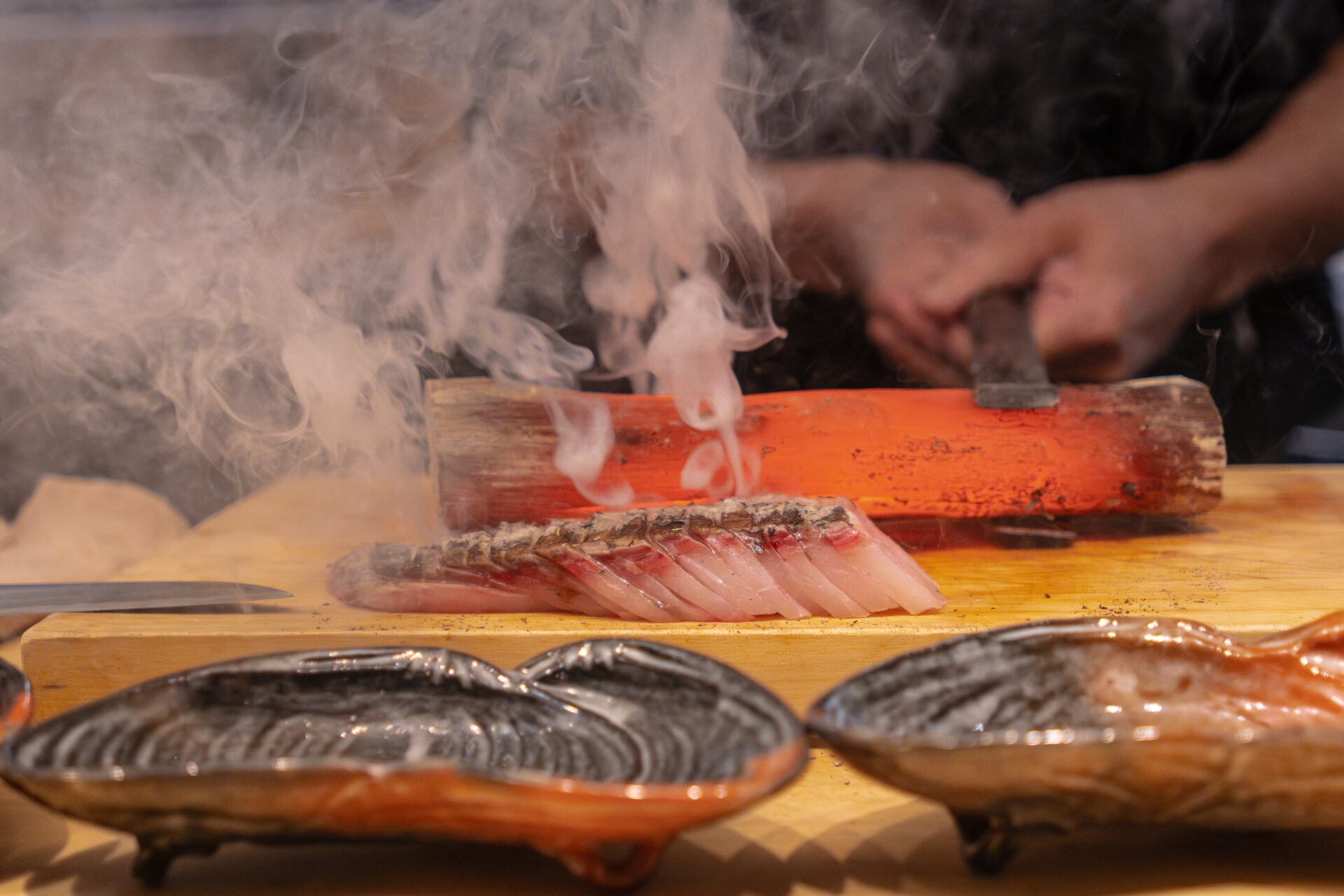
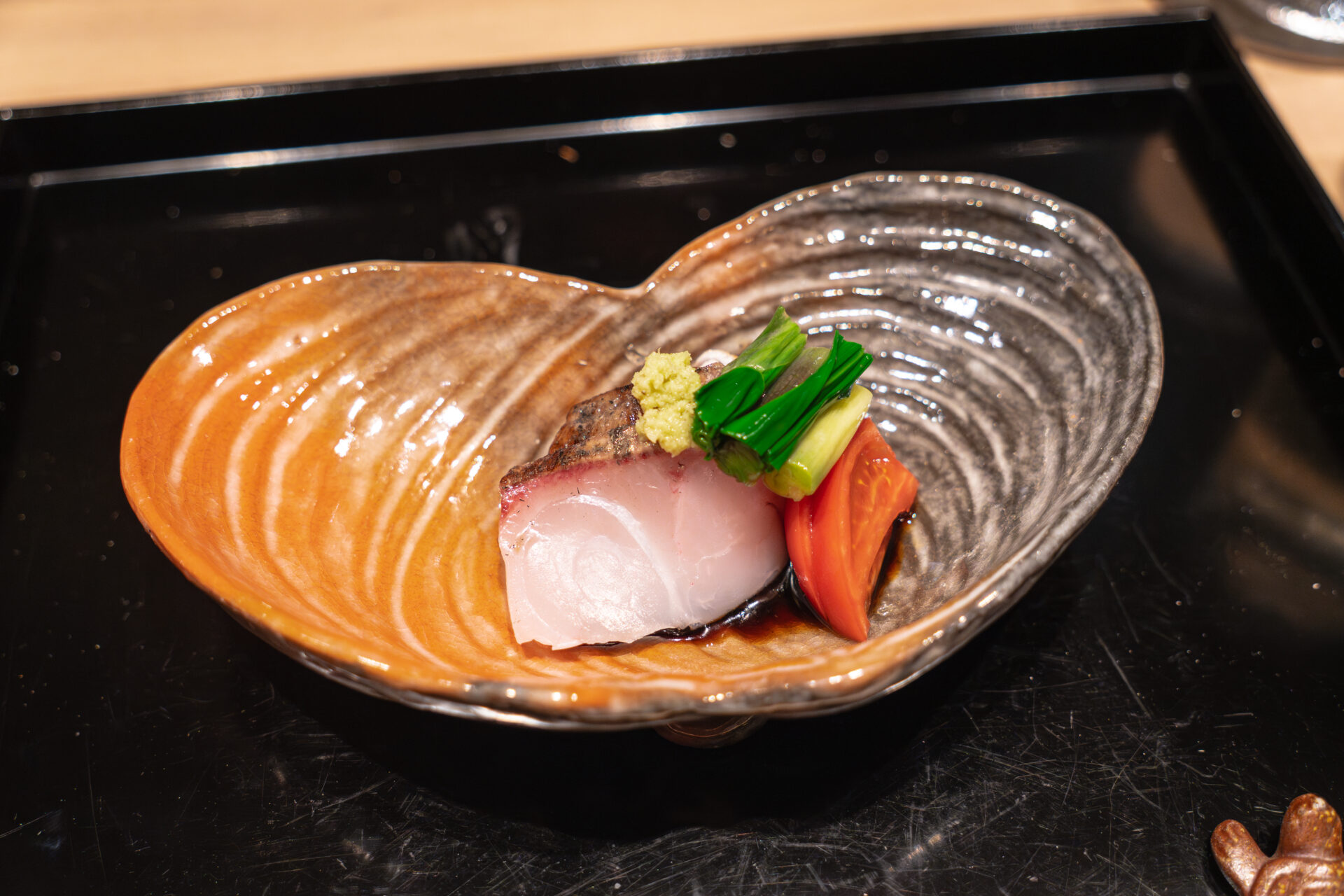
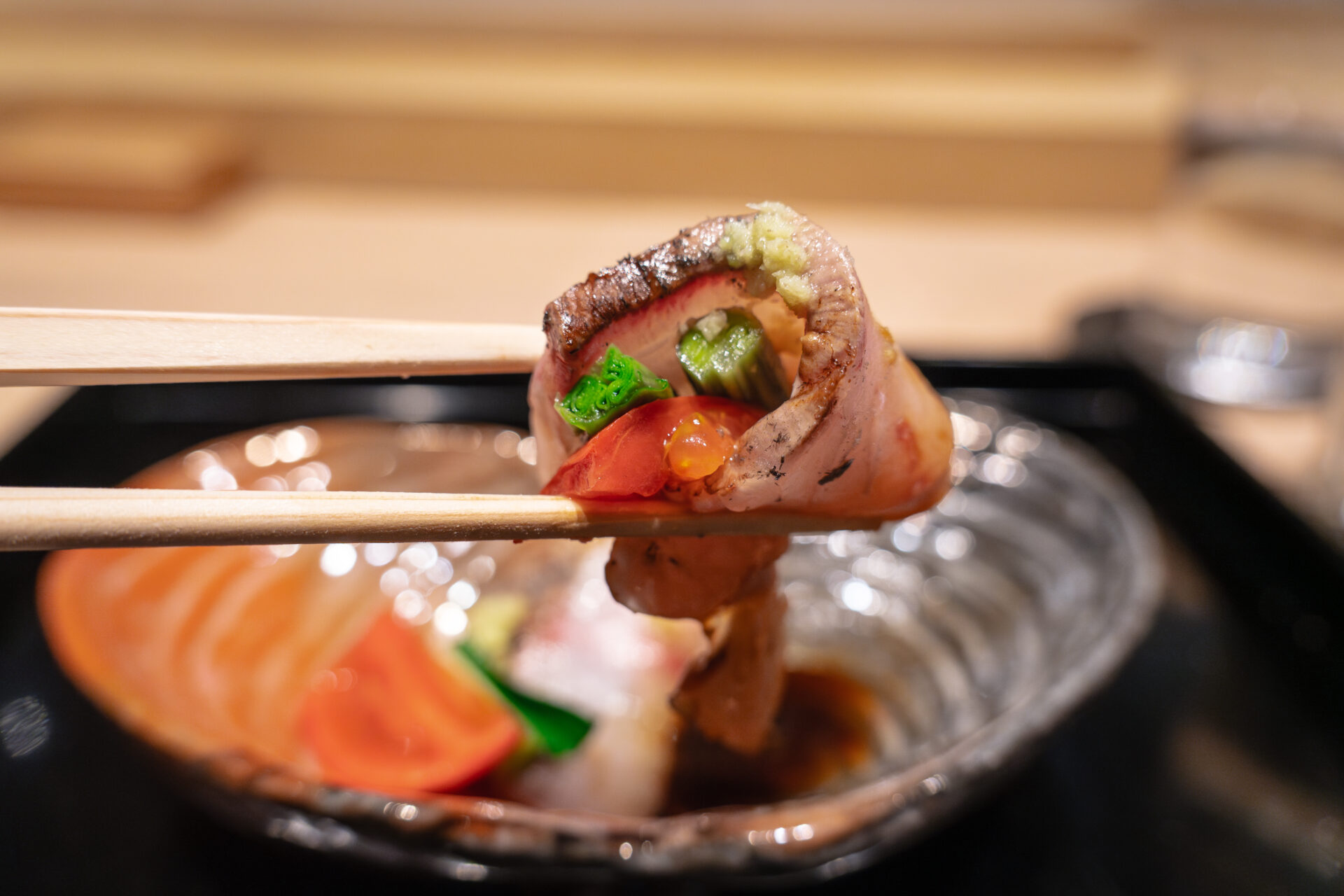
Charcoal-Grilled Eel from the Ōsumi Peninsula
Midway through the course, a surge of anticipation rises with the arrival of live eel, freshly delivered from the Ōsumi Peninsula in Kagoshima.
Its languid movements in a wooden tub quietly evoke a respect for the life being offered. With gloved hands, Chef Ogawa swiftly and skillfully fillets the eel—a performance in itself. Rather than following the Kansai or Kanto style, he applies a distinctive method, splitting the eel along the back and removing the bones with precision.
At this stage, the eel isn’t served just yet. Instead, it undergoes a separate process of charcoal grilling and steaming, only to make its full appearance later in the course.
This “show the prologue, finish the story later” structure is a masterful touch—building anticipation and drawing guests into the culinary narrative. One can’t help but wonder how this moment will resolve in a future course, setting the stage for what’s to come.
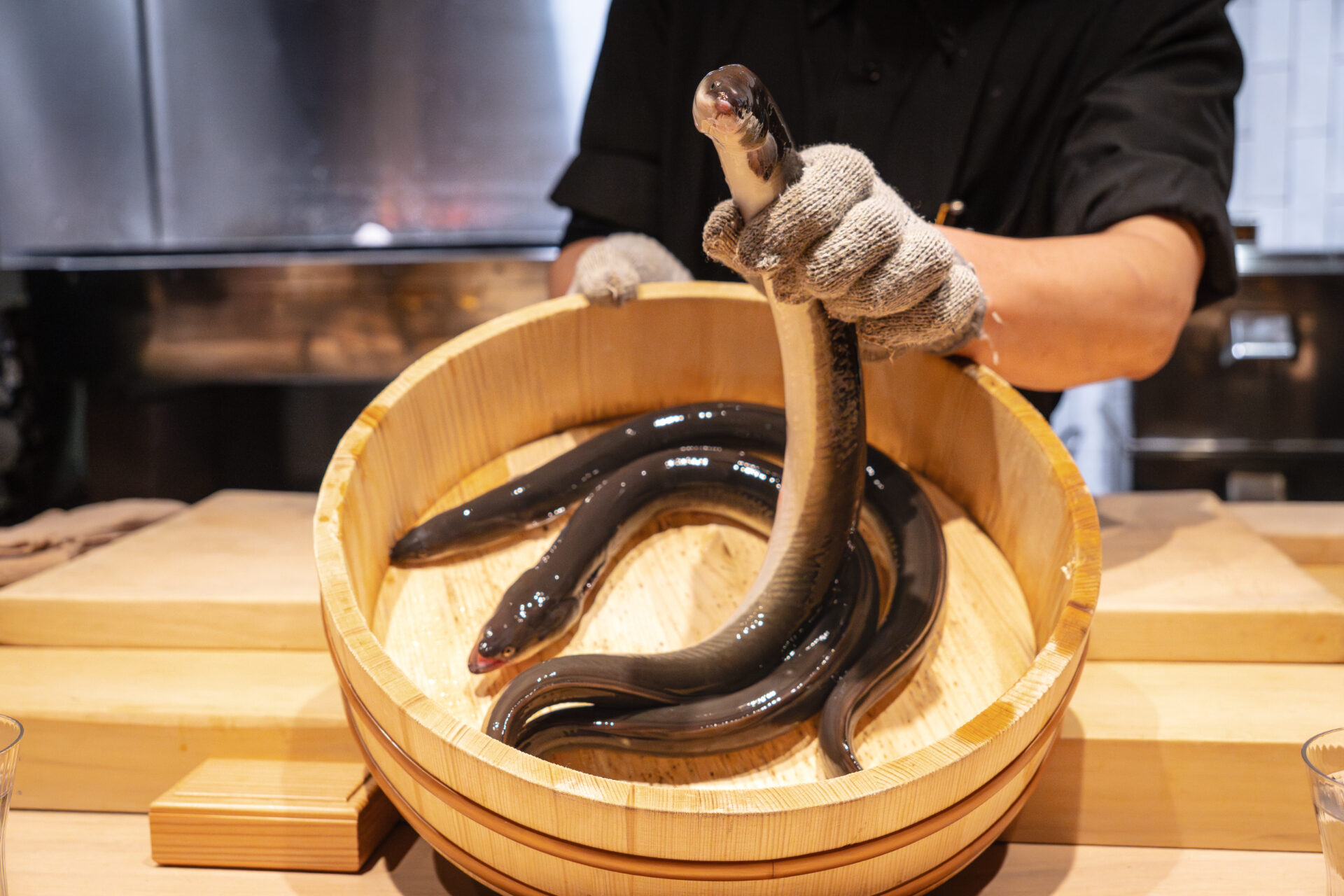
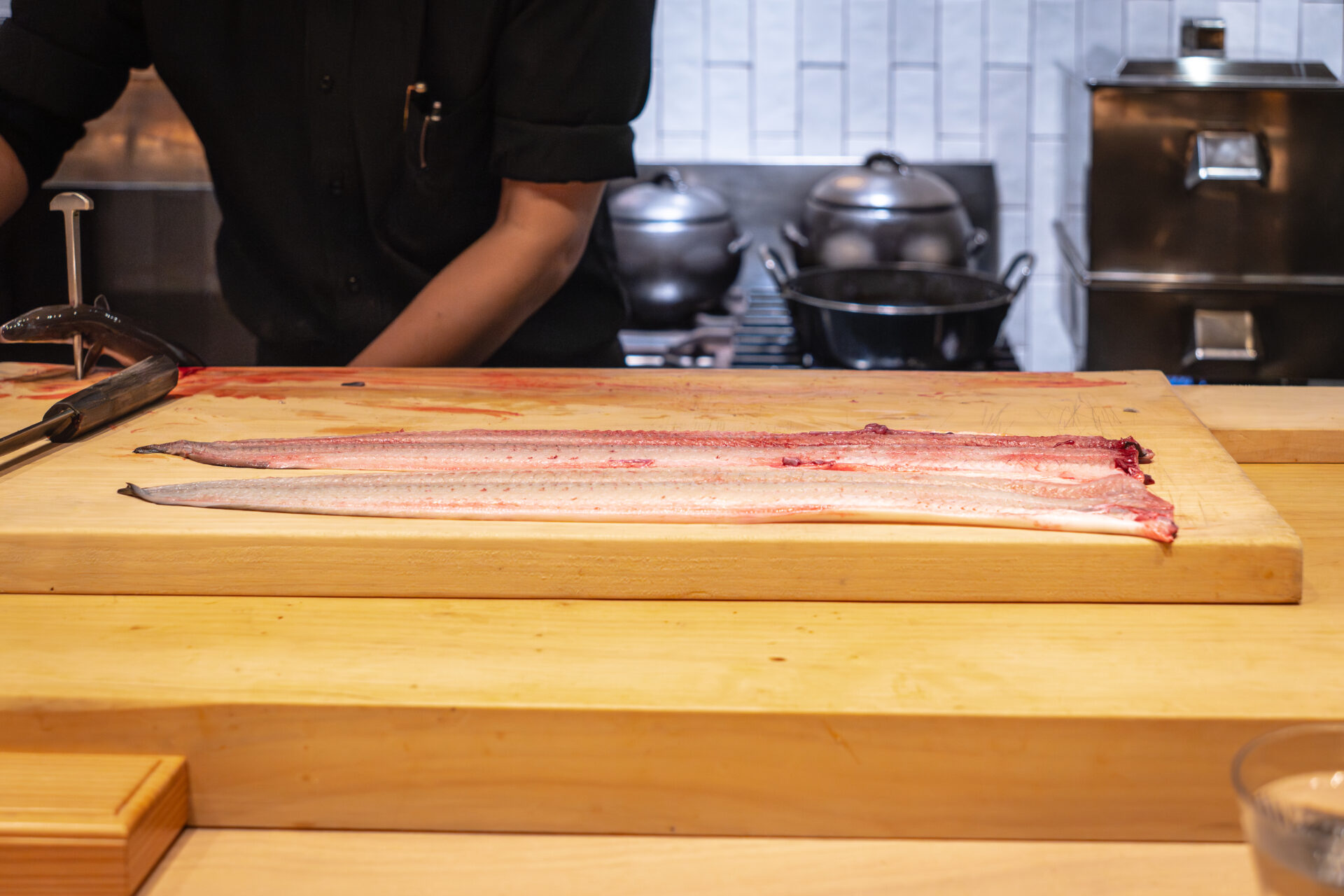
Usui Green Peas in Light Broth (“Mame-goromo”)
Gently signaling the shift of seasons, this dish features Usui mame (a traditional green pea variety from Matsumoto, Nagano) as the star ingredient.
Presented in a shimmering glass bowl, plump peas wrapped in a tender green coating appear as soft, spring jewels. The Usui mame is known for its milky sweetness and gentle earthiness—clean in flavor and naturally elegant.
The peas are bathed in a light, thickened dashi broth and served as a mame-goromo—a dish that seems to capture spring sunlight in a single spoonful.
Once tasted, the soft sweetness of the crushed peas and the warmth of the delicate broth gently fill the mouth with quiet nostalgia. The dashi plays a supporting role, never overpowering the essence of the beans.
Inserted at just the right point in the course, this dish provides a moment of stillness—a breath of air that lends the entire experience a sense of rhythm and relief.
Deeply nourishing, yet unpretentious, it embodies the lingering elegance of Japanese cuisine.
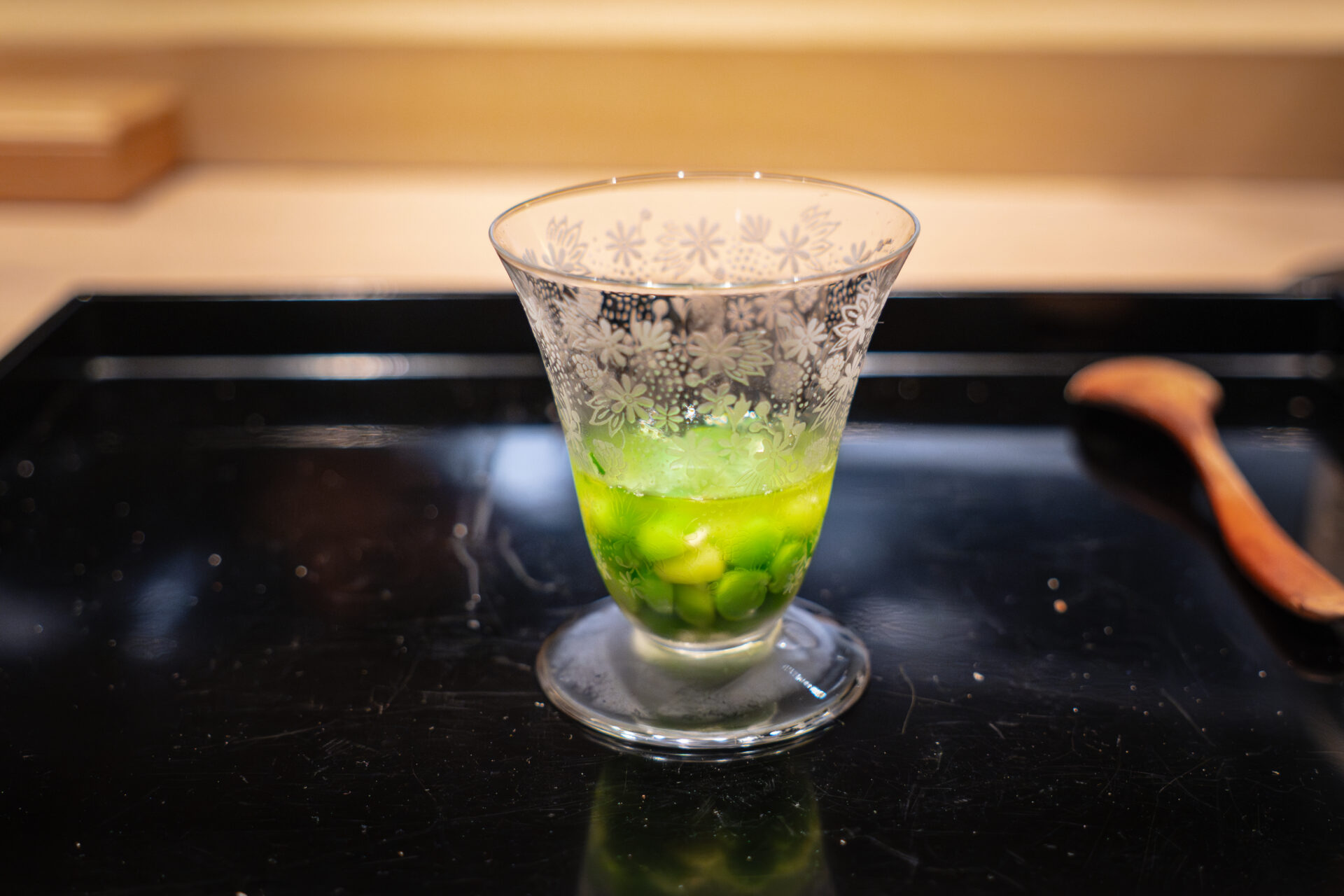
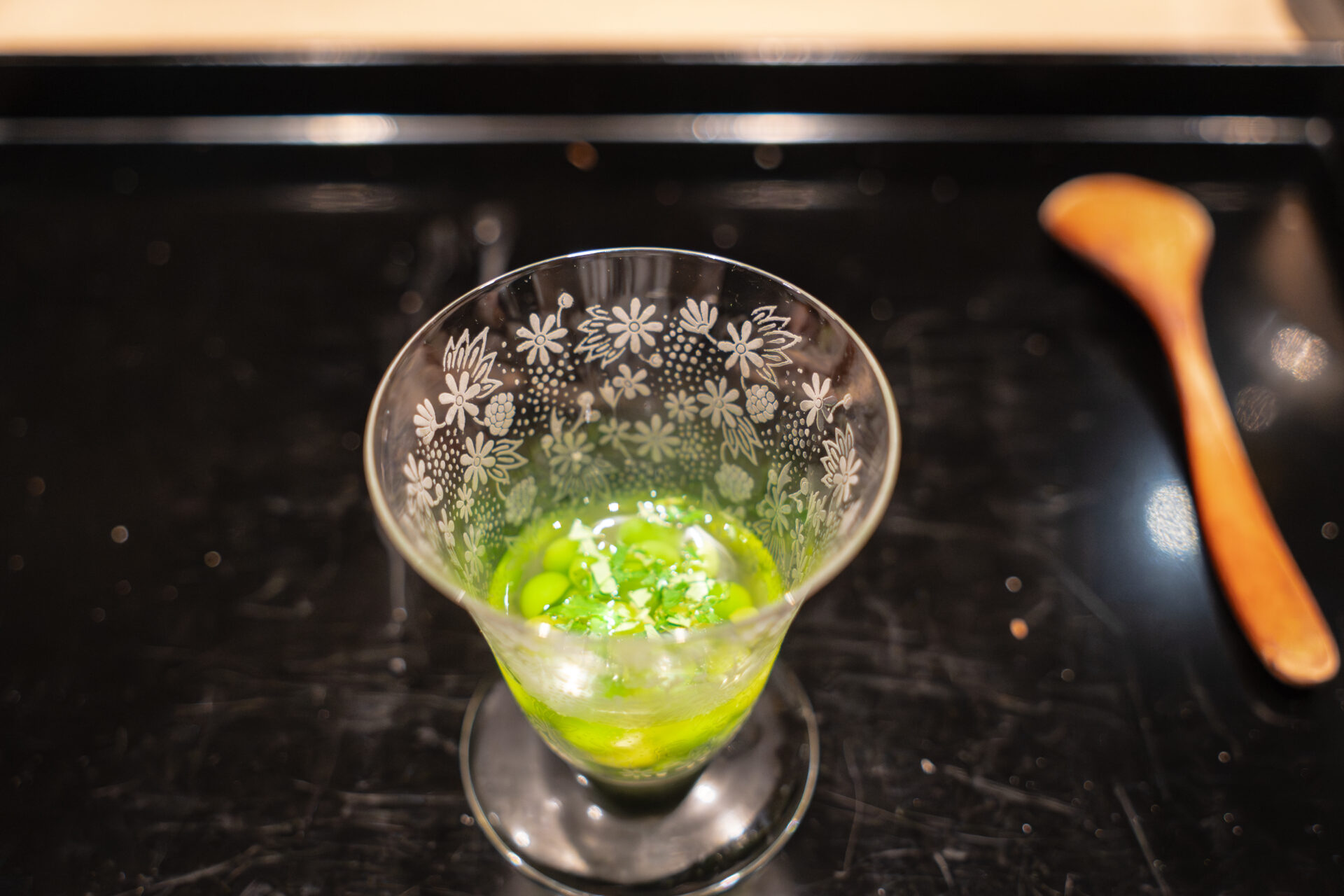
Soup Course | Clear Clam Broth with Kinome Herb
Served midway through the course, this clear soup captures the essence of spring in its most refined form. When the soft, rounded lacquer lid is gently lifted, steam rises along with the pure aromas of hamaguri (Japanese clam) and kinome(young sansho leaf), filling the air with a clean, invigorating fragrance that seems to ask for a moment of stillness and respect.
The clam, sourced from domestic waters such as the Ariake Sea, is notably plump. Simmered gently, it holds a plump texture that slowly releases deep oceanic umami with every bite.
What makes this dish distinctive is its lightly cloudy broth—a result not of murkiness but of the natural richness from the clam shells, giving it a soft opacity and character that speaks of unfiltered depth.
A single leaf of kinome placed on top provides a burst of freshness and lingering green aroma, perfectly concluding each sip.
There is no excess, only quiet confidence and profound skill—a bowl that tells a story of seasonality through taste, and leaves an impression through scent.
A beautifully understated celebration of spring.
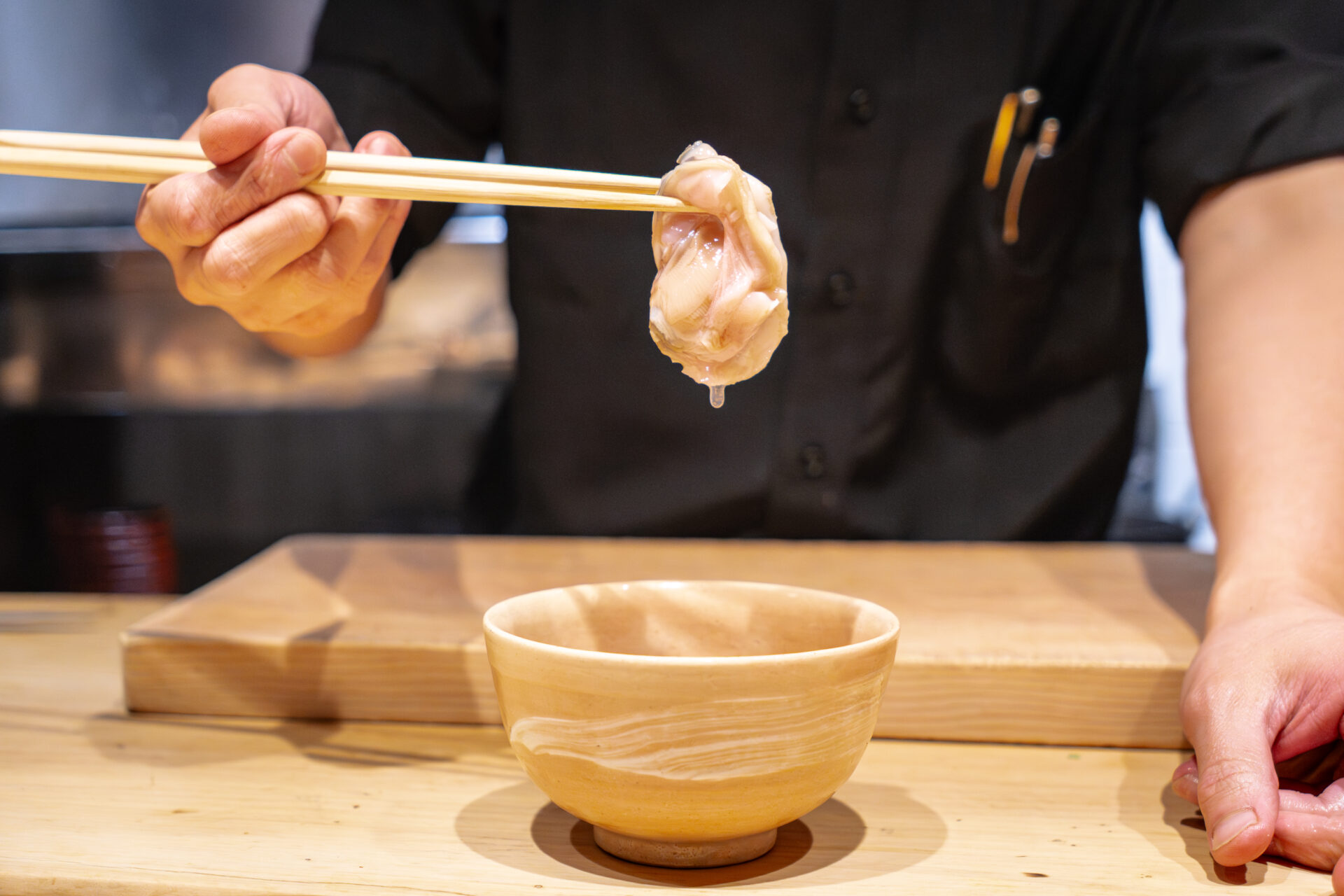
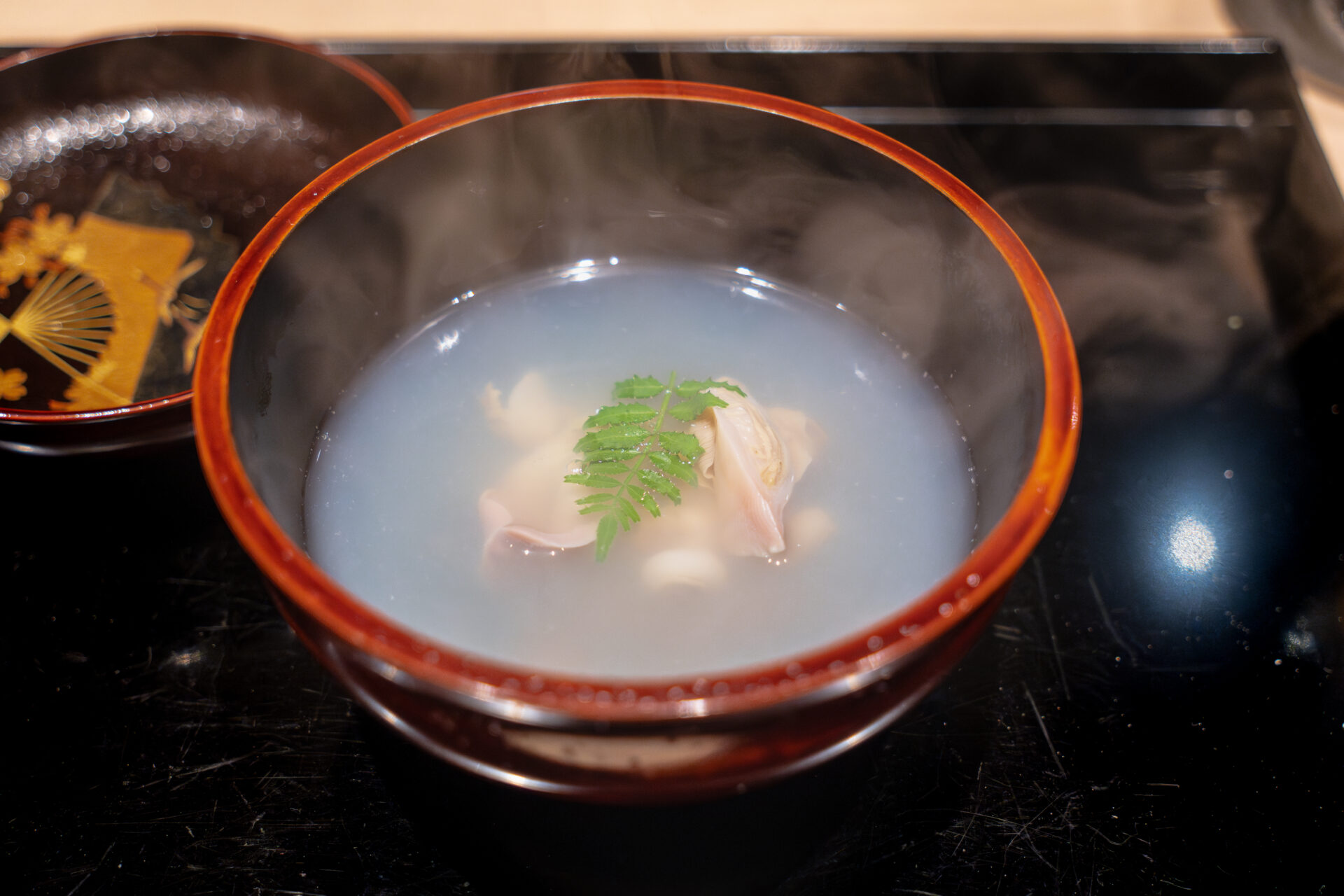
Interlude | Steamed Rice with Asari Clams and Spring Mountain Vegetables
This gentle interlude is a comforting bowl of steamed rice (meshi-mushi), topped generously with asari clams and a medley of spring wild vegetables.
Served in a warm, teacup-like vessel with rising steam, it exudes the aroma of deep nourishment.
Plump clams form the core of flavor, complemented by seasonal delicacies like warabi (bracken fern), soramame (broad beans), takenoko (bamboo shoots), and tara no me (angelica sprouts). Each ingredient stands on its own, yet the steaming process brings them into harmonious unity—each bite offering a slightly different expression of spring.
No thickened miso or broth is added; the dish leans on the natural moisture and umami of the ingredients themselves, resulting in a light yet satisfying dish.
This softly textured, nuanced dish creates a moment of calm in the course—like a pause in music that adds emotional depth. A reminder of the careful balance and thought behind the entire dining progression.
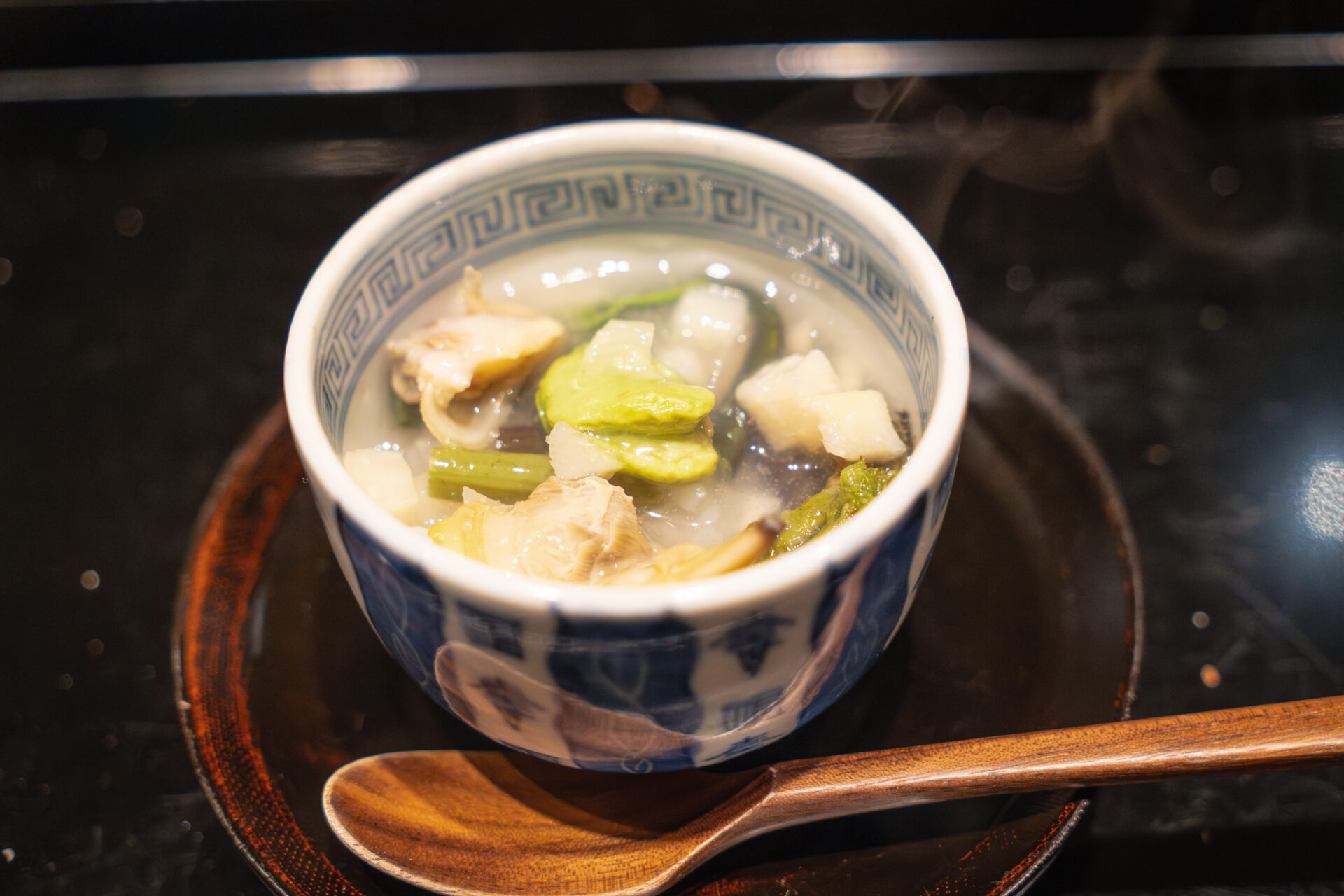
“Churro” of Udo (Japanese Spikenard)
A surprise midway through the course: a warm bite handed across the counter, wrapped in crisp white paper. It looks like a sweet treat—but it’s actually a tempura of udo (Japanese spikenard), humorously presented as a “churro.”
With a crisp bite, the batter is light and airy, while the inside reveals the fresh, almost wild bitterness and juiciness of udo. The flavor leans more toward “foraged greens” than “vegetable,” but is never overpowering—thanks to perfectly controlled moisture and heat.
The beauty of this “churro” lies in its balance. Deep-fried to a perfect crisp on the outside, it retains the tender vitality of a spring mountain plant within.
Presented by hand rather than with chopsticks, this playful gesture adds intimacy and spontaneity. It’s a performance—lighthearted yet exact—that brings a delightful break to the rhythm of the meal.
A small but impactful dish that embodies the Sumi to Ogawa philosophy: tension and release, seriousness and joy.
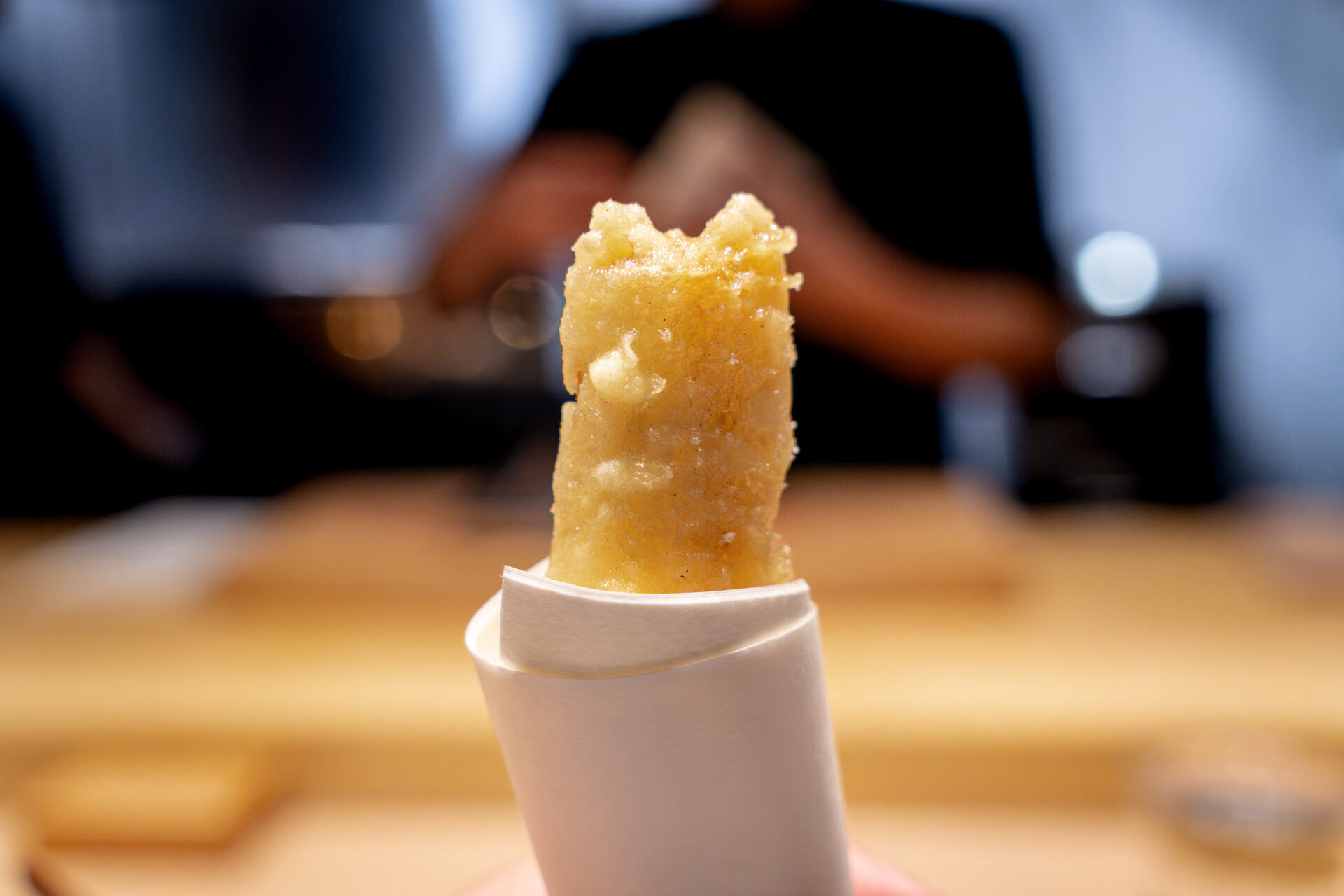
Soup Course | Kyoto Bamboo Shoots and Tokushima Wakame
Another striking soup arrives, this time featuring shirako takenoko (young bamboo shoots) from Kyoto and wakameseaweed from Tokushima.
The bamboo shoots, still wrapped in their thin outer skin, are incredibly tender—melting on the tongue with no trace of fiber. They embody the fleeting delicacy of early spring.
Supporting them is the wakame, used with restraint so as not to overpower. Instead, it gently supports the sweetness of the bamboo and the subtle richness of the broth, creating harmony rather than contrast.
The dashi here is especially soft—centered around the natural essence of bamboo, with no heavy notes or dominating flavors. It’s gentle, warming, and deeply nourishing.
Visually minimal yet full of meaning, the bowl reflects seasonal sensitivity, regional memory, and the chef’s finely honed instinct.
Each sip is like breathing in spring itself.
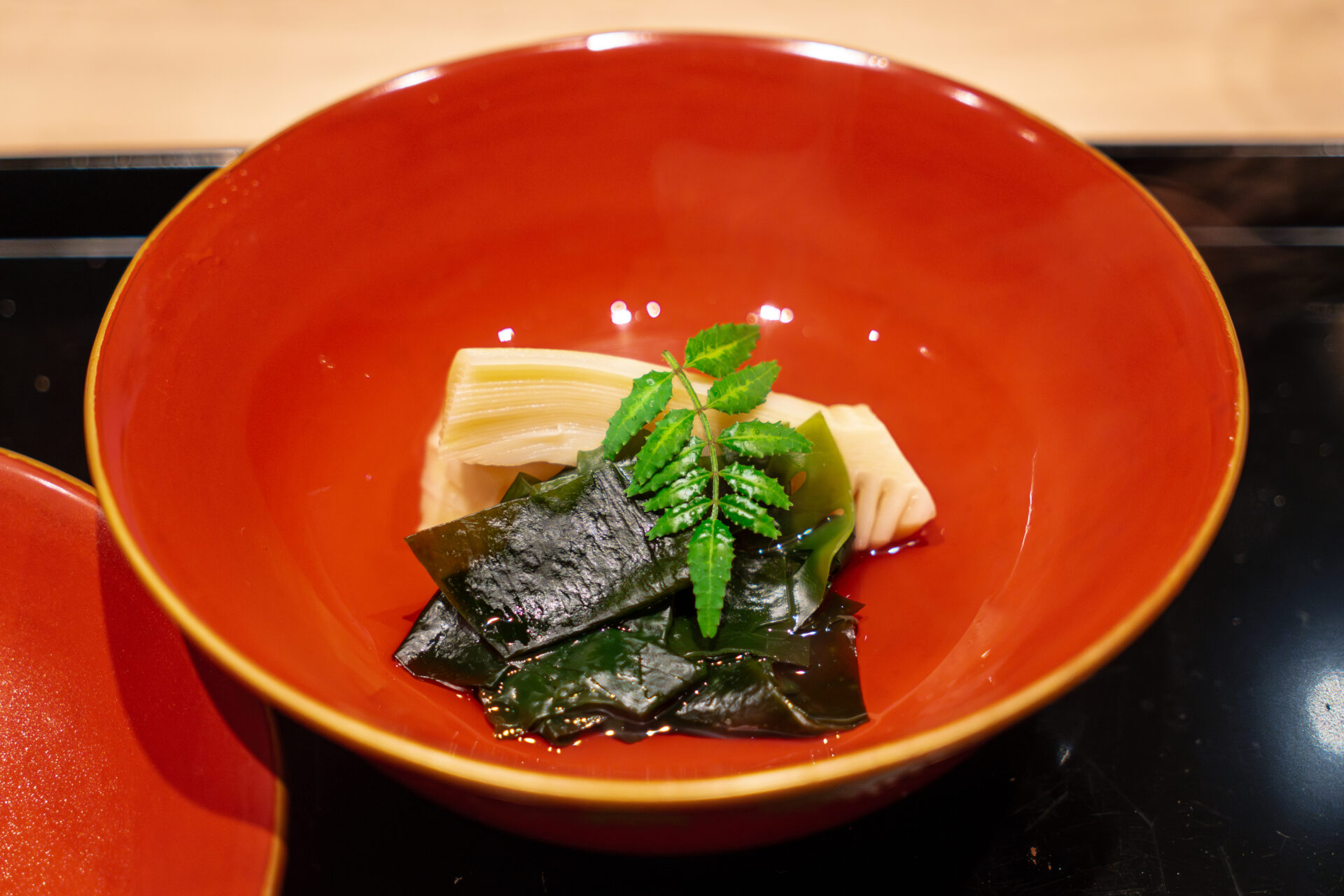
Specialty | Shirayaki Grilled Eel from Ōsumi Peninsula
The live eel introduced earlier returns—now fully transformed into the restaurant’s signature dish.
Prepared through a precise process of steaming and charcoal grilling, this shirayaki (eel grilled without sauce) is a distillation of the Sumi to Ogawa ethos: trust in ingredient and fire.
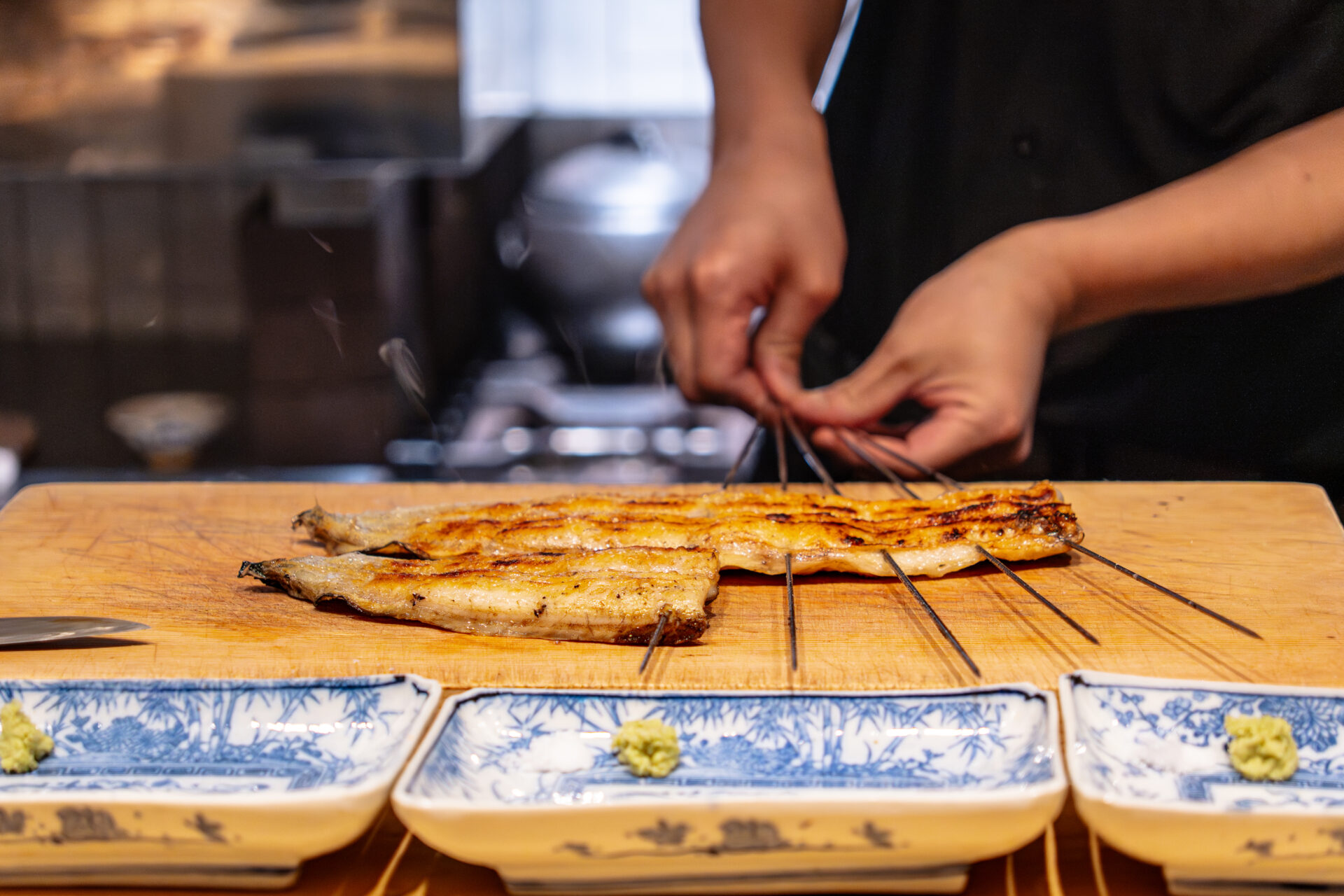
The eel is astonishingly tender, with delicate charring on the surface and rich fat that melts effortlessly in the mouth. No sauce is applied—only hon wasabi and salt are served on the side, inviting the diner to season as desired.
With a small dab of wasabi, the eel’s sweetness sharpens and deepens. With a pinch of salt, the umami blooms. Watching the chef manipulate the charcoal just moments before only heightens the sense of live tension and reverence.
This is not just a dish—it’s a philosophy.
A memorable representation of the restaurant’s essence.
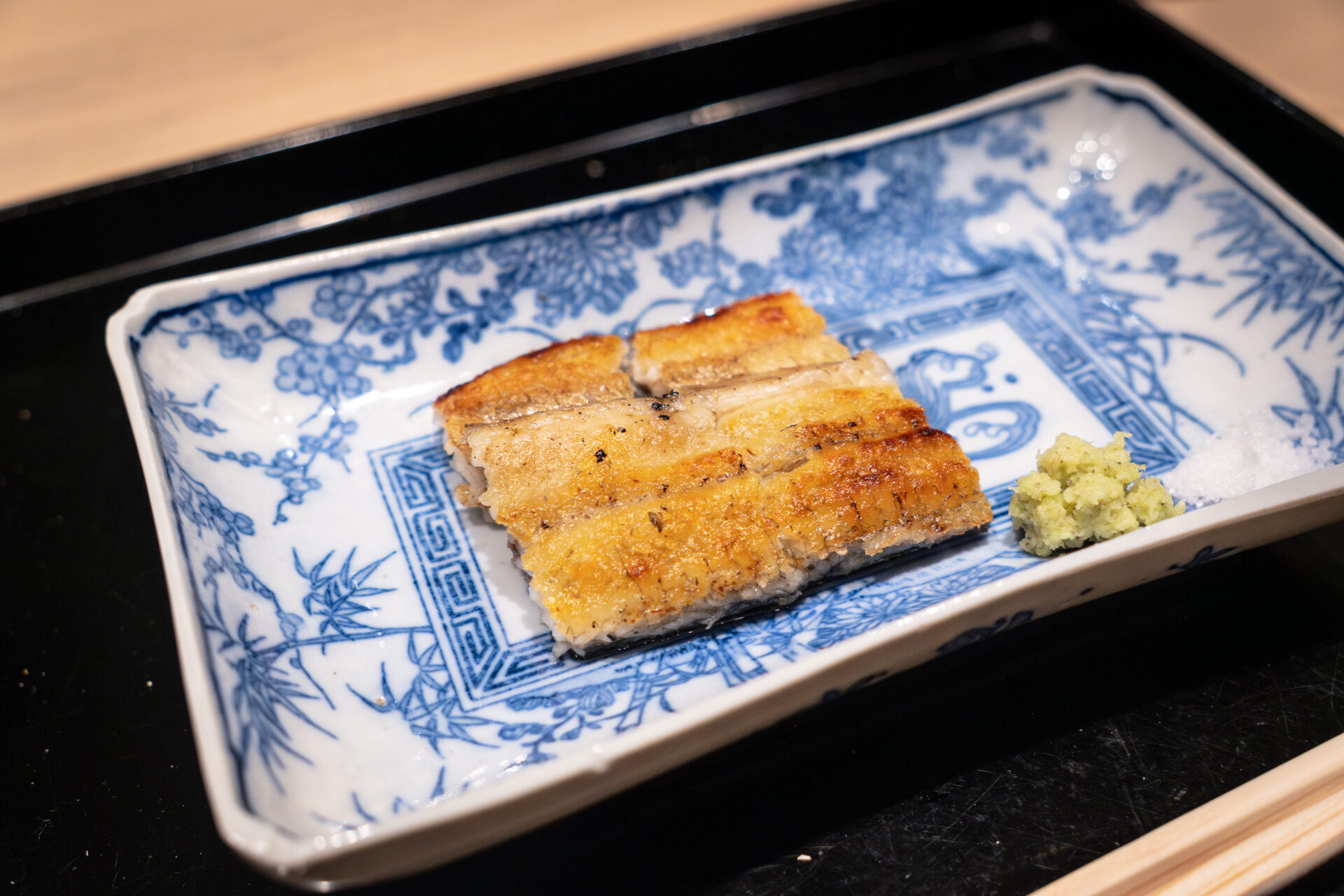
Hot Course | Sakura Trout Shabu-shabu in White Miso Broth
A gentle warmth returns with this spring-hued shabu-shabu.
Slices of sakura masu (cherry trout), gleaming in a yellow porcelain vessel, are neither grilled nor raw—they’re delicately swished in a white miso broth simmering before your eyes.
As the trout is lightly cooked, the floral aroma of hana sansho (flowering Japanese pepper) rises, joined by the gentle bitterness of watercress and the sweetness of onion. Together they embrace the fish in a subtle, elegant way.
Each bite shifts slightly in flavor and fragrance, echoing the unpredictable rhythms of spring weather. A final touch: udonnoodles in the remaining broth, soaking up every last nuance.
A dish that speaks of tenderness, impermanence, and quiet strength.
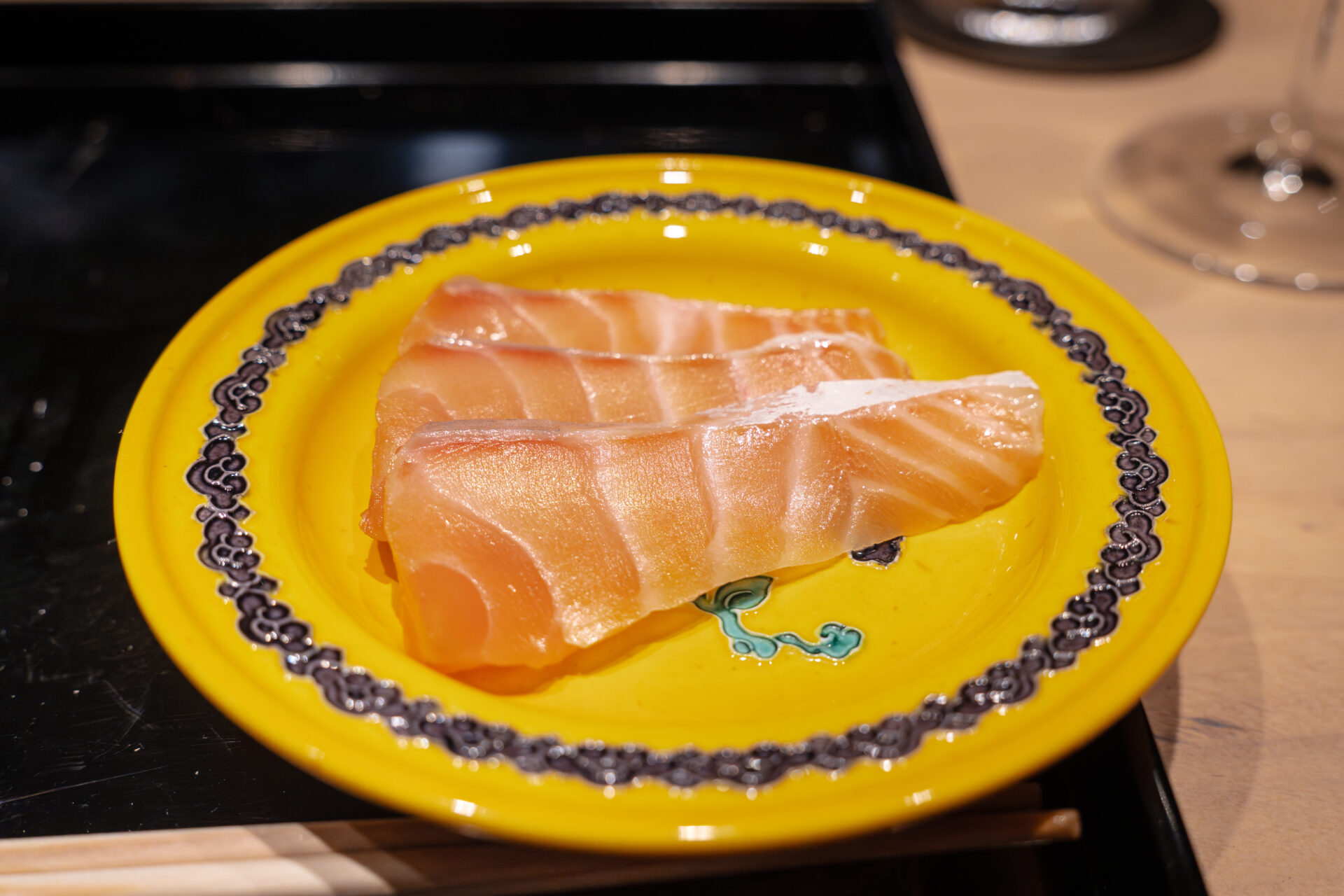
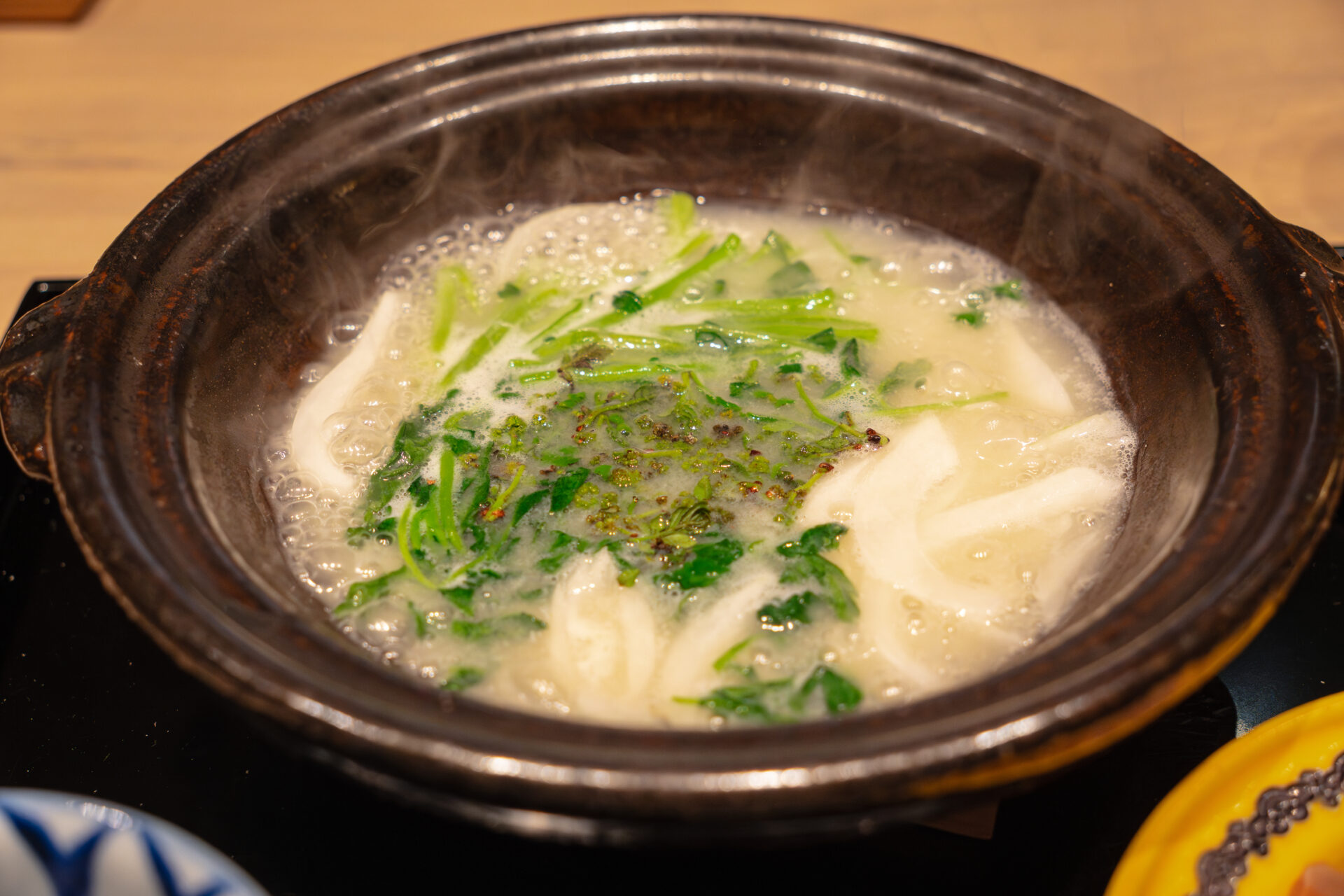
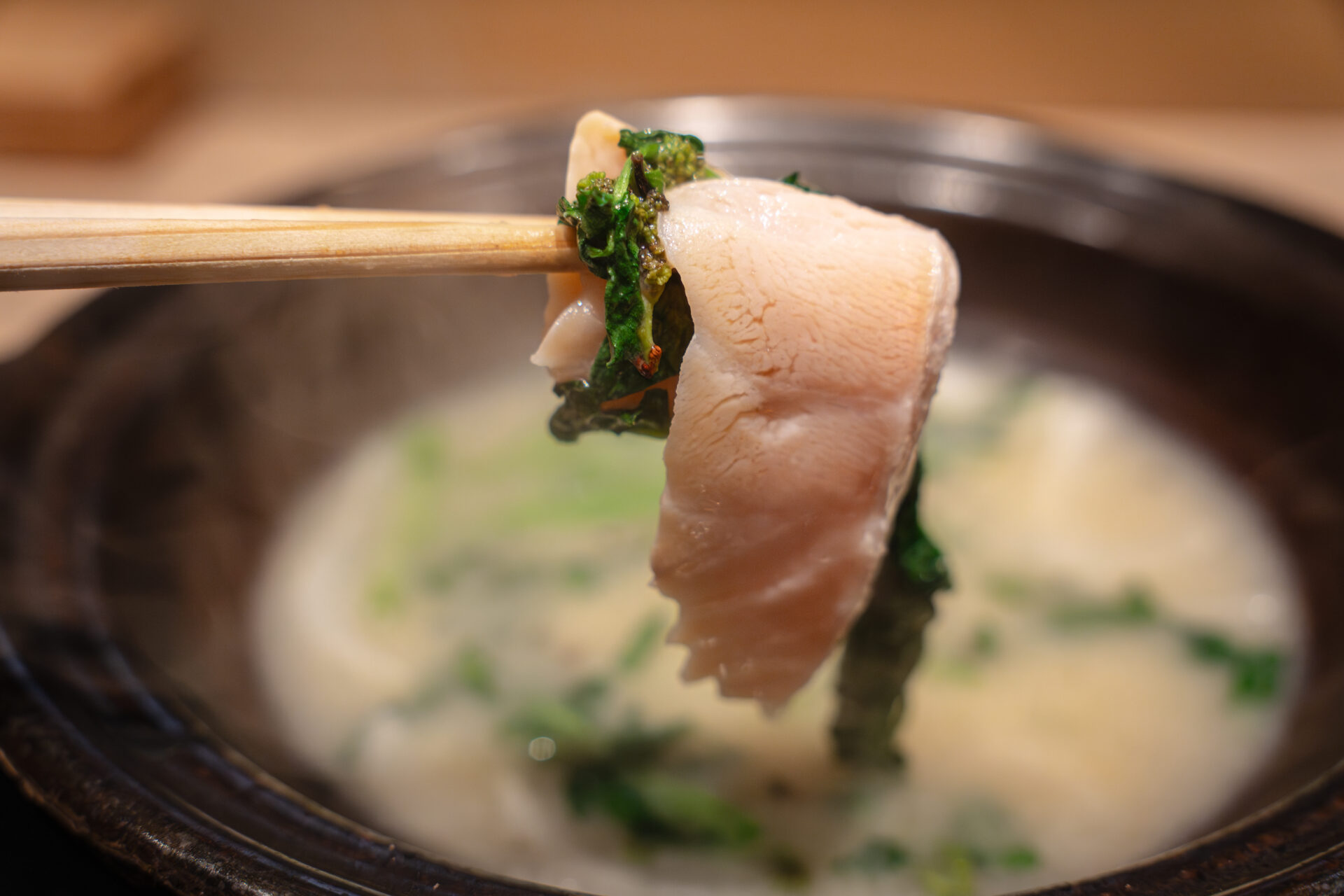
Rice Course | Bamboo Shoot Rice and White Rice with White Miso Broth
As the course nears its conclusion, two kinds of rice are served—not as a heavy ending, but as a gentle interlude.
One is bamboo shoot rice: aromatic, delicately seasoned, with crisp texture and earthy sweetness. Topped with a sprig of kinome, it evokes a spring field in bloom.
The other is plain white rice—meant to be enjoyed with the leftover shabu-shabu broth. The miso soup, now infused with trout fat, cress, and hana sansho, becomes a subtle, deeply flavorful topping.
Both are quiet, humble, yet undeniably memorable. A transition rather than a conclusion.
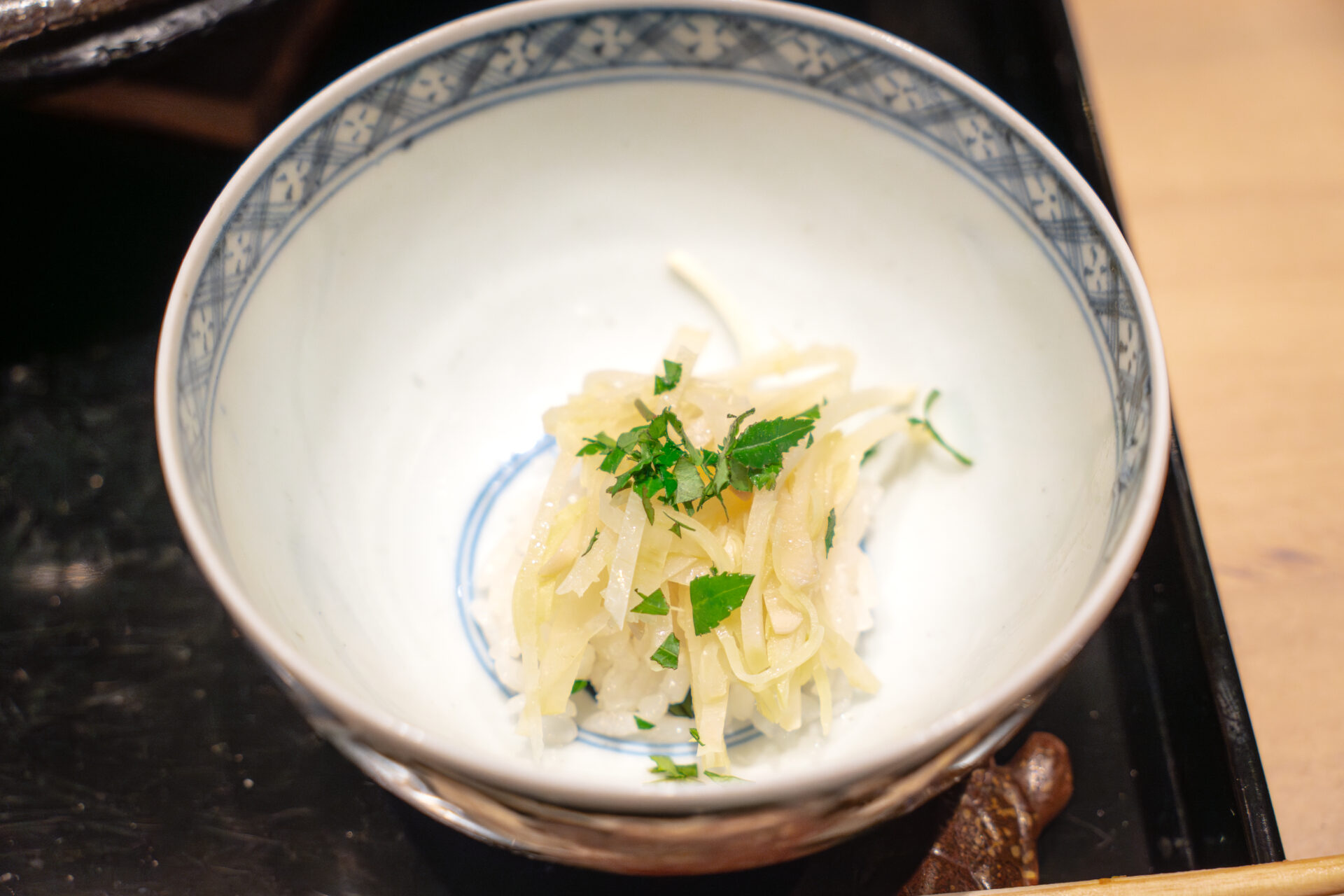
Main | Unagi Kabayaki TKG (Tamago Kake Gohan)
The final savory crescendo: a lacquered box is opened to reveal glistening kabayaki (eel grilled in sweet soy sauce) from Ōsumi Peninsula.
First, a simple bite of eel: smoky, tender, rich.
Next, spooned over hot white rice—the joy of sauce and grain melting together.
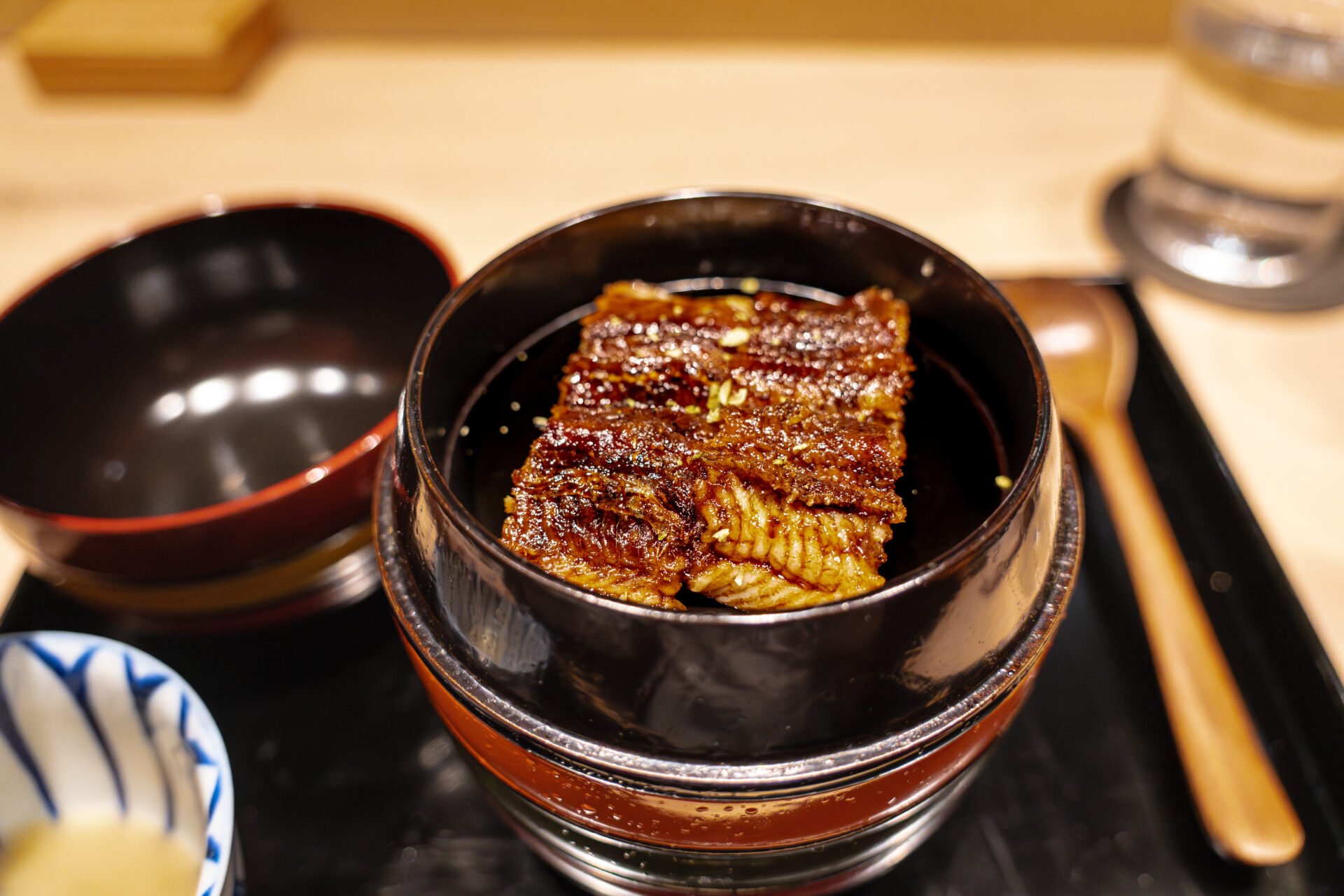
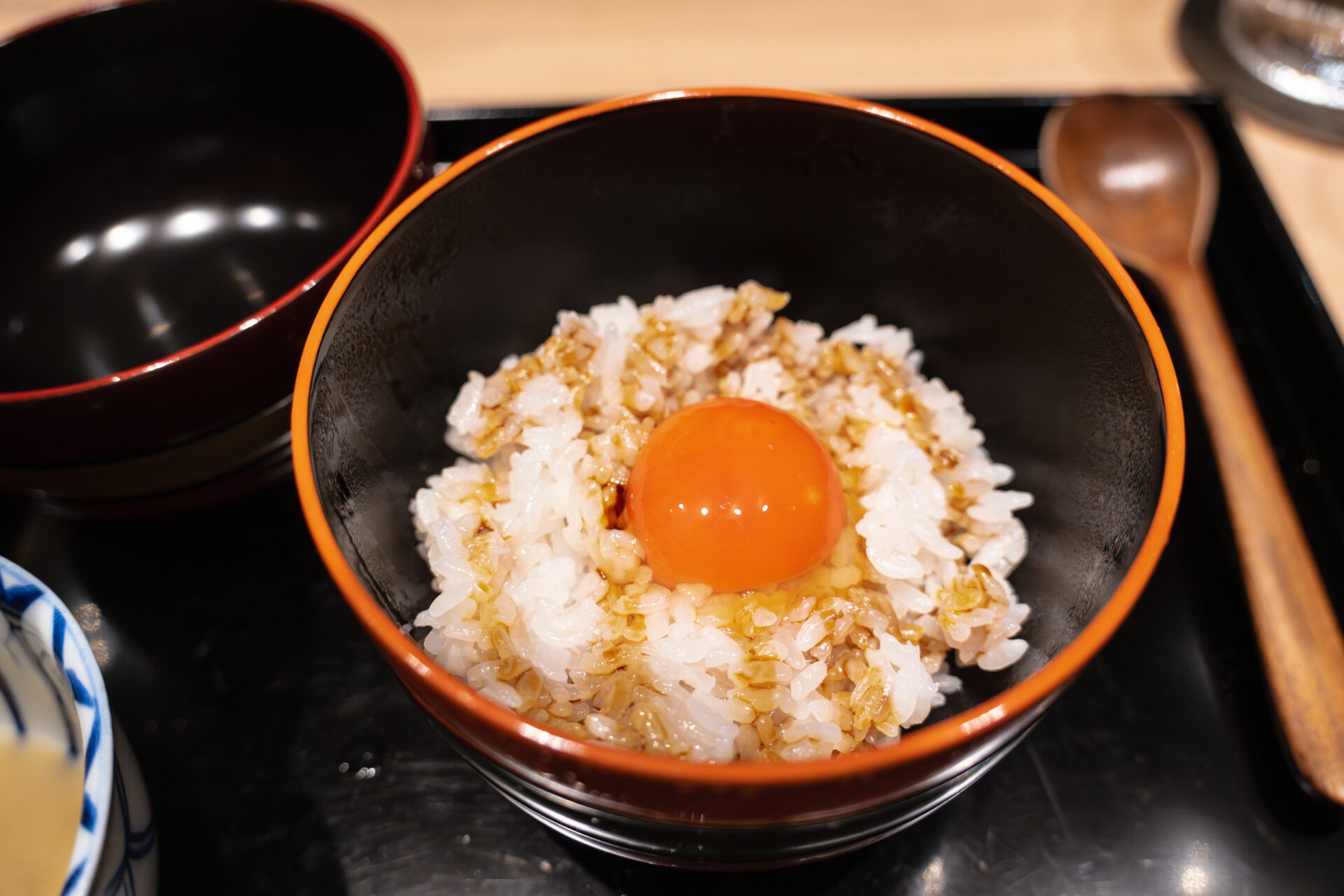
Then, the climax: a raw egg yolk added and mixed in, transforming the bowl into tamago kake gohan. The creamy yolk envelops the eel and rice in a luxurious, savory harmony. The dish shifts and evolves with every bite, culminating in complete satisfaction.
Accompanied by a light broth and seasonal pickles, this dish showcases Sumi to Ogawa’s theatrical flair and satisfying finish.
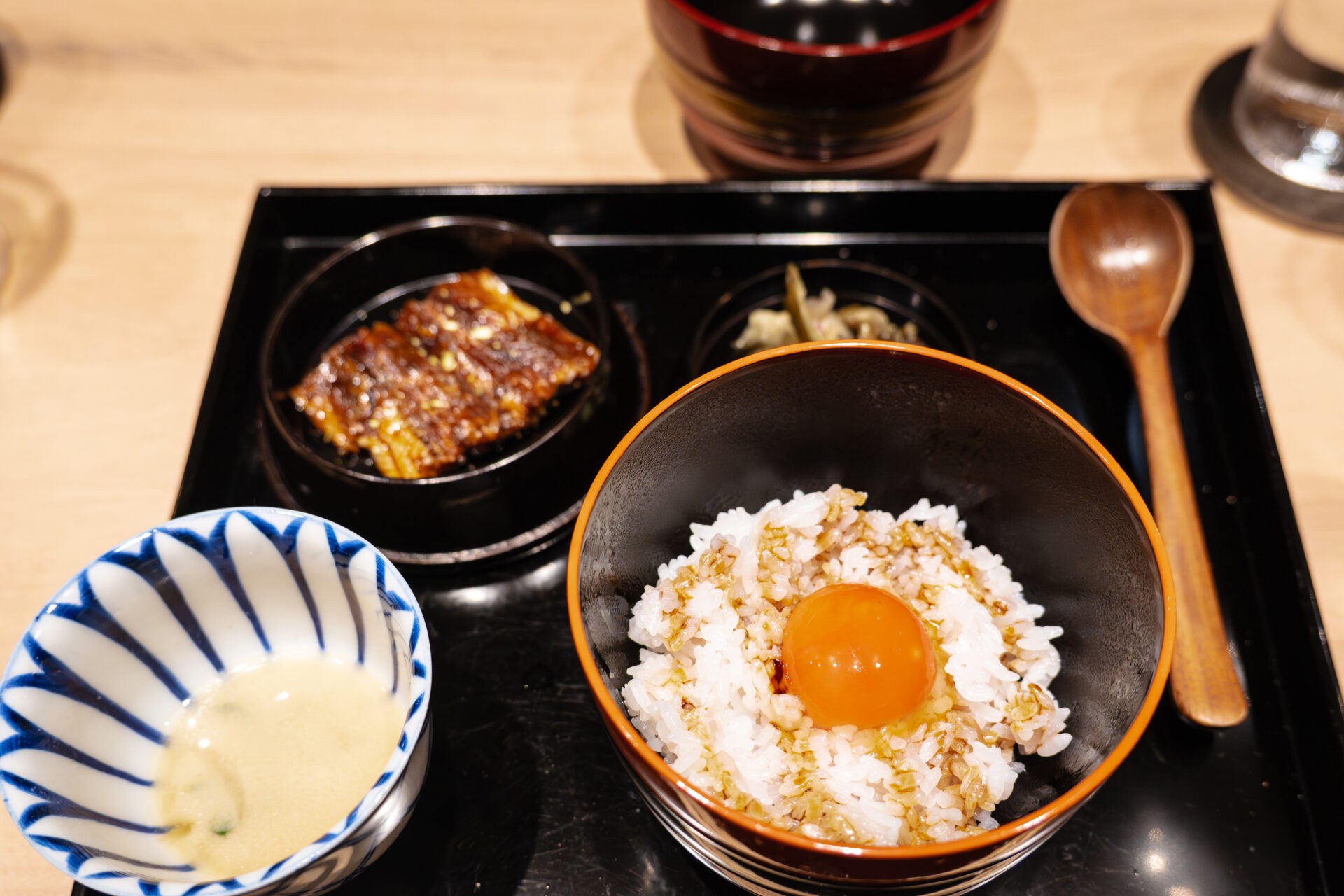
Second Rice | Homemade Mentaiko, Chirimen Sansho & Bamboo Shoot Rice
Just when you think the finale has arrived—another act appears.
Dubbed a “second main,” this offering includes two more rice bowls.
One features steaming white rice topped with mentaiko (spicy cod roe) and chirimen sansho (dried baby sardines with sansho pepper)—a brilliant interplay of spice, salt, and aroma.
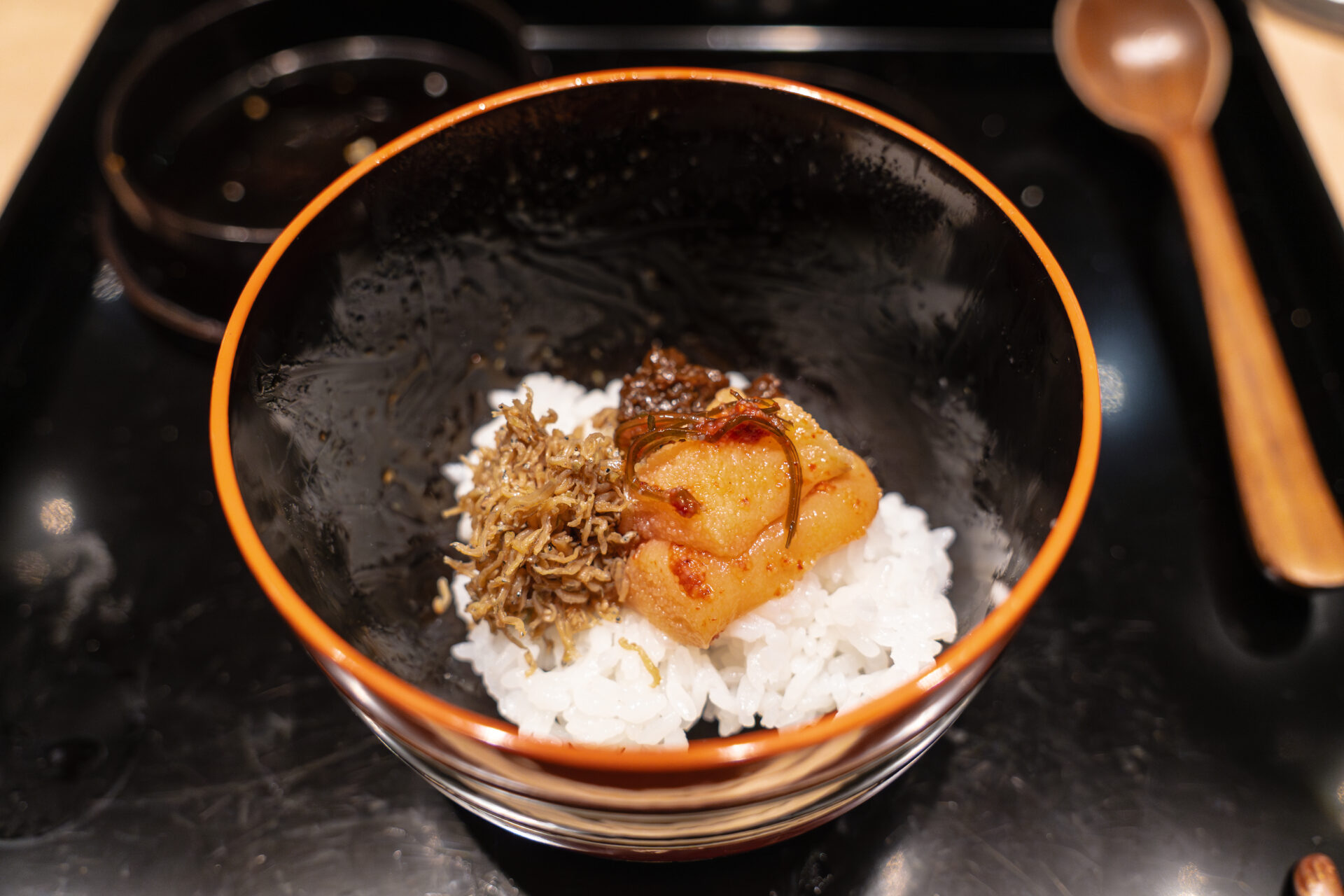
The other is another take on bamboo shoot rice, delicately scented with yuzu. A bit of mochi mugi (glutinous barley) adds lightness and texture.
Too refined to be called a “refill,” these bowls feel more like a second celebration—proof that Sumi to Ogawa sustains its energy until the very end.
Dessert & Finale
Kinako and Warabi Mochi Mini Parfait
The final curtain falls with a mini parfait that distills the essence of wagashi (traditional Japanese sweets).
Layered in a slim glass are kinako (roasted soybean flour), warabi mochi, kanten (agar jelly), and rich kuromitsu syrup.
Each bite offers a new texture and taste—chewy, soft, cool, nutty, sweet.
Prepared and served right at the counter, this dessert draws the gaze as much as the palate. A poetic finish to a dining experience that is as much performance as cuisine.
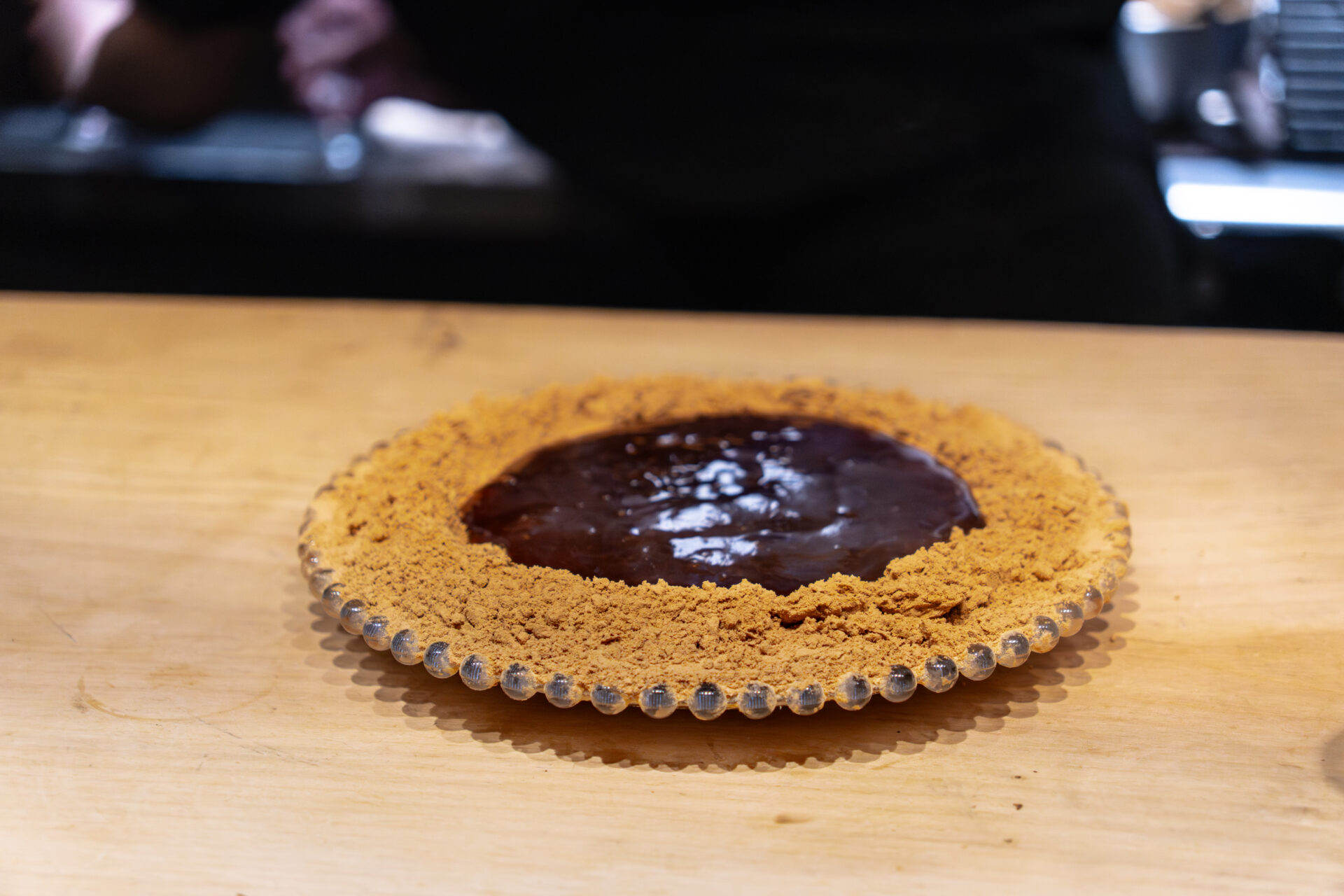
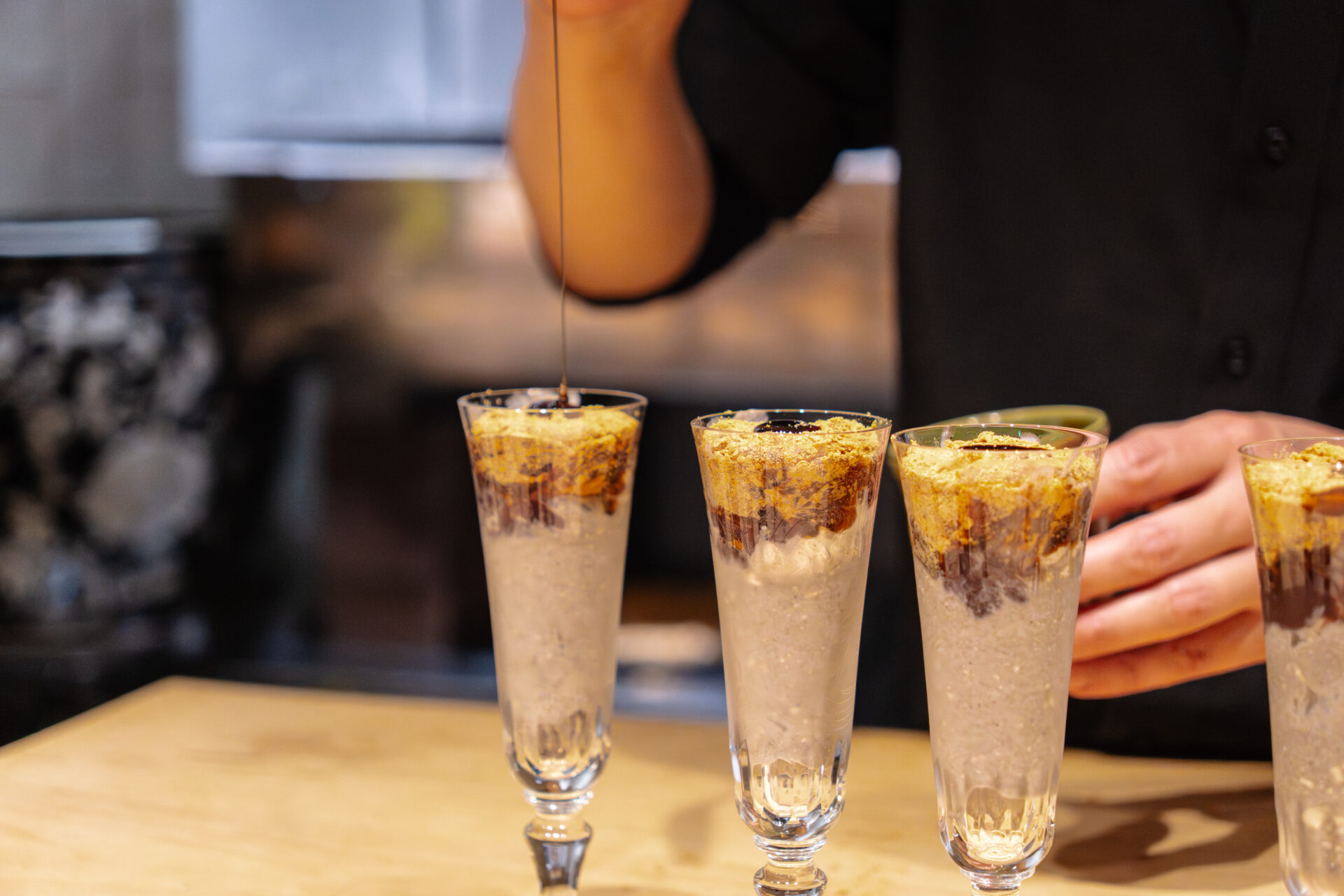
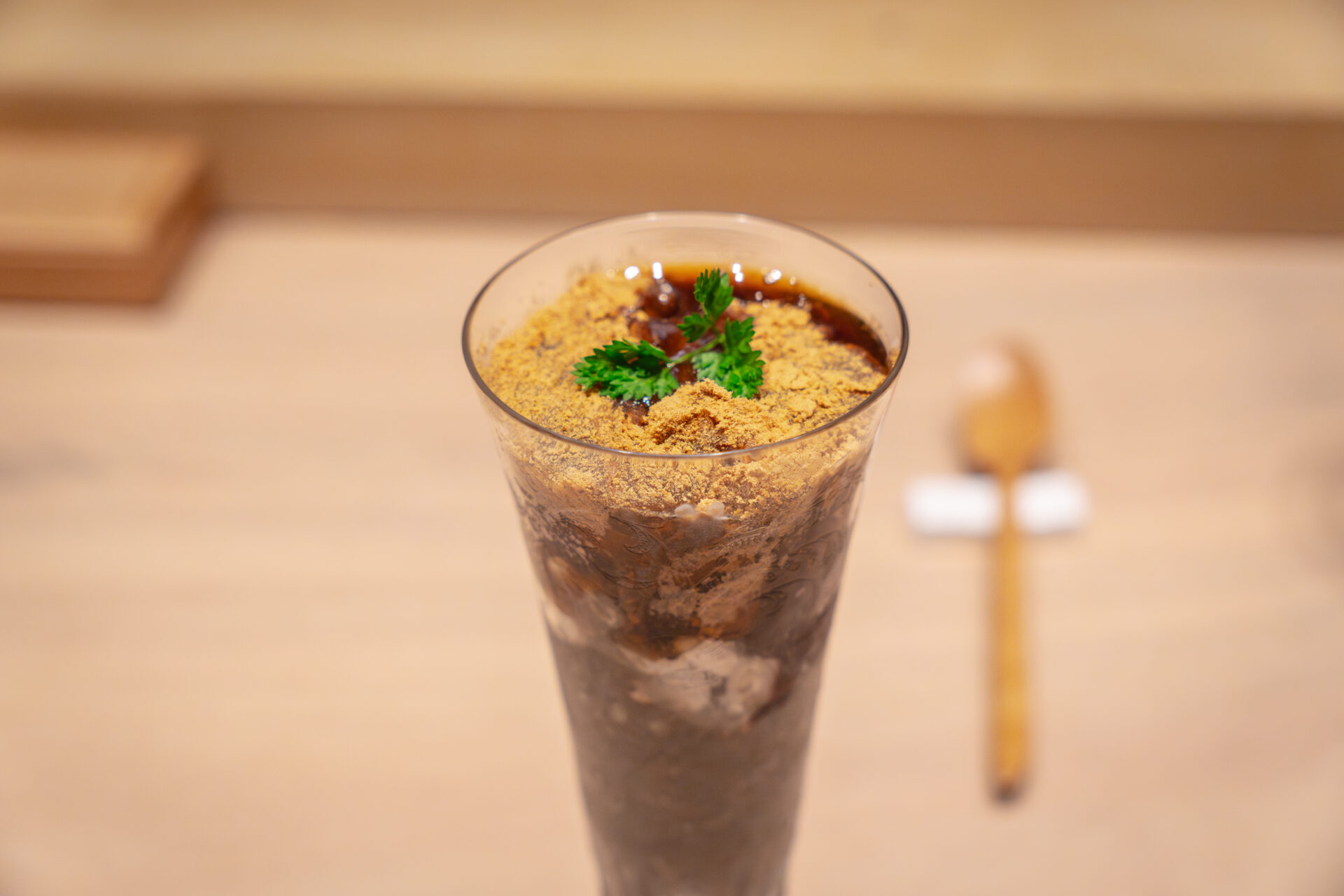
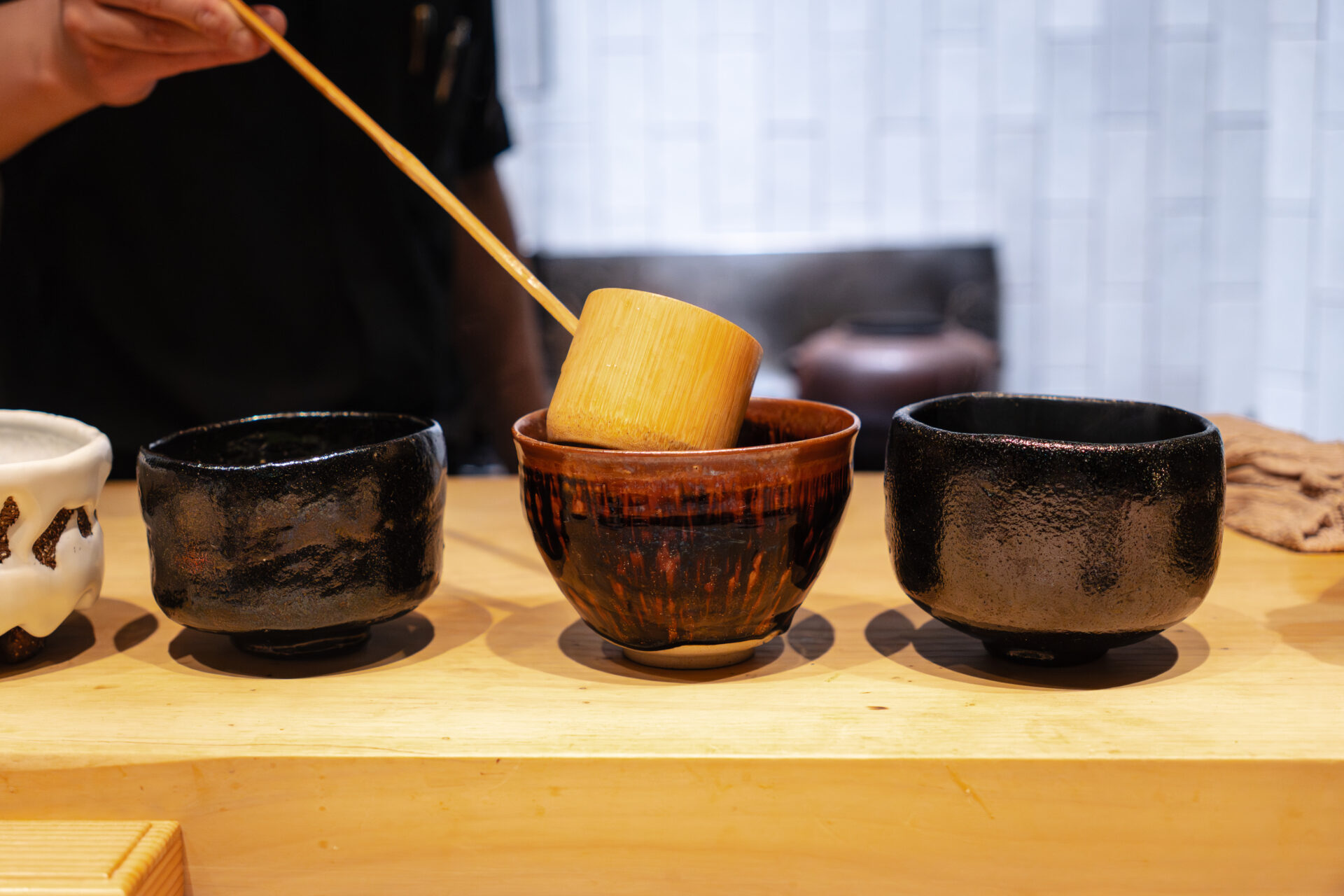
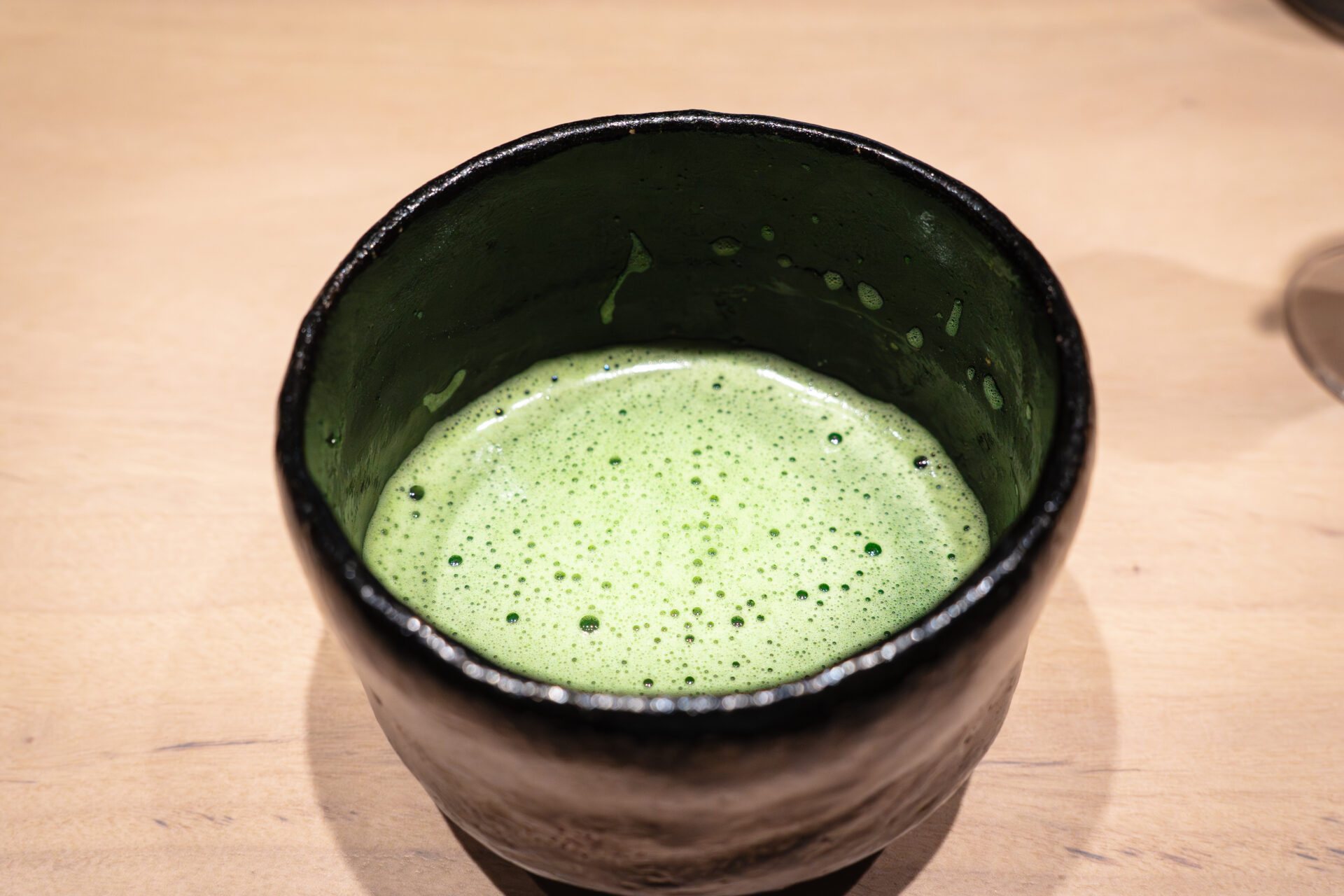
Summary & Impressions
At Sumi to Ogawa, quiet intensity and refined aesthetics unfold across the counter in a way that feels both meditative and theatrical. Though located in Fukuoka, the atmosphere evokes the dignified calm of a revered Kyoto establishment—a space where tradition and artistry converge.
Each dish follows the philosophy of “less is more,” stripping away excess to reveal the essence of flavor. Yet, this restraint is never dull—aromas, temperatures, and textures are orchestrated with precision, allowing the gentle smokiness of charcoal and the umami of dashi to linger long after each bite.
The course is punctuated with moments of sensory delight: a dish handed directly across the counter, the crackle of fire during a live grilling, a dessert plated right before your eyes. These gestures bring rhythm and warmth, turning the entire evening into a performance.
Among the most memorable moments: the crisp aroma of charcoal-seared ishidai, and the deep satisfaction of eel served over rice—pure joy with each bite. As the meal progresses, the chef’s thoughtfulness and playfulness are revealed, balancing classical technique with modern creativity.
This is Japanese cuisine as it exists right now—where heritage meets innovation.
From cuisine to space to movement, everything flows seamlessly. It’s a restaurant that evolves with the seasons, one that invites you to return again and again.
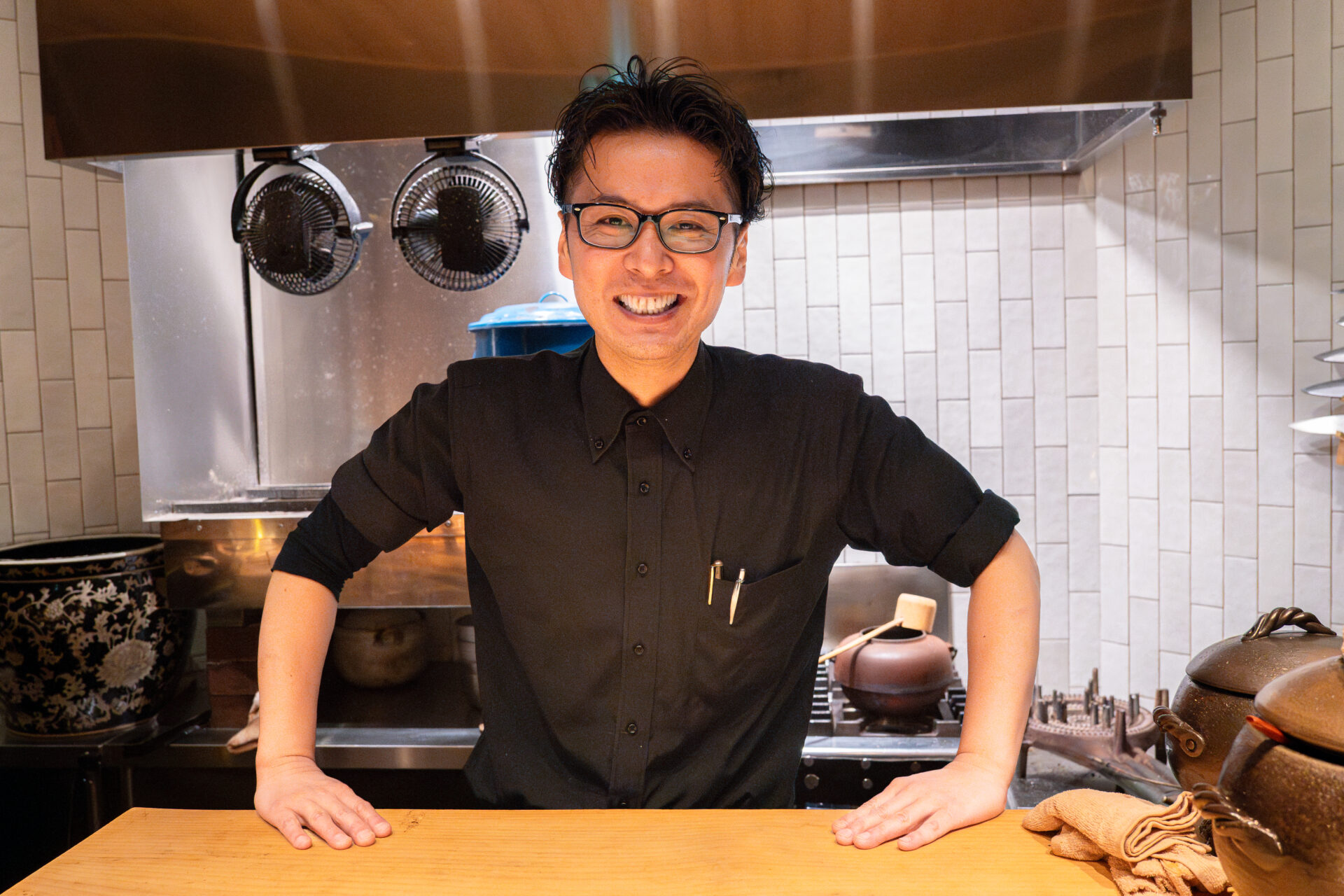
Reservations & Access
Address
Saphir Konoi Bldg. 3F, 5-2-5 Nakasu, Hakata-ku, Fukuoka-shi, Fukuoka, Japan
Access
1–2 minutes on foot (approx. 30–40 meters) from Nakasu-Kawabata Station (Subway Airport Line)
Opening Hours & Regular Holidays
Dinner: Monday–Saturday, 17:00–23:00
Closed: Sundays
Holidays: Irregular closures on public holidays
Reservations
Strictly by reservation only
Counter seating only – 5 seats total
For bookings, check the official Instagram: @sumitoogawadesu
- TAGS

